
Whole Earth: The Many Lives of Stewart Brand
by
John Markoff
Published 22 Mar 2022
It would take another year for NASA to produce such a photo, and it would become a powerful symbol that united rather than divided humanity. Brand stands with Ken Kesey in front of Further, the Merry Prankster bus. Leaning out of the window in the driver’s seat is Neal Cassady, the legendary Beat figure immortalized in Jack Kerouac’s On the Road. Brand would serve as a bridge between the 1950s Beats and the 1960s hippies, but he never fit neatly into either group. Although Brand was never an “on the bus” Prankster, he is photographed here riding the bus on its way to the Acid Test “graduation” that Ken Kesey organized to mark the end of the LSD era he had helped create. The events leading up to the “graduation” in October 1966 were described in detail by Tom Wolfe in The Electric Kool-Aid Acid Test.
…
Earlier, he played an instrumental role in the emergence of the 1960s American counterculture, which exploded upon the American scene in many ways and still resonates in the political and cultural battles taking place today. He was in the thick of the events that led to the modern environmental movement during the 1970s. At various times he has dabbled in journalism, photography, activism, multimedia, social media, and business consulting. He has also been a provocateur. A member of Ken Kesey’s band of Merry Pranksters, he helped light the spark that led to the Summer of Love and the San Francisco music scene. Among the first to catch wind of the significance of cyberspace and personal computing, in the 1980s he helped create an early online virtual community. Although he was largely an observer of the technical community that created Silicon Valley, his various ideas and crusades around the Whole Earth Catalog, which he created in the fall of 1968, foreshadow and resonate with the techno-utopian culture that the Valley spawned.
…
Members of the Morley and Barnard families went to Washington and Oregon and created what would become the Western Logging Company. Decades later they sold it to Georgia-Pacific in a deal that some family members perceived as a giveaway. The immigrant West Coast Brands could have been the Stampers, the tough-as-nails Oregon logging family imagined in Ken Kesey’s novel Sometimes a Great Notion. Stewart Brand’s oldest brother, Mike, spent three summers in the woods in the family logging business in the Northwest and at one time hoped that he might someday be able to take over the logging operation. A decade later Stewart would follow in Mike’s footsteps.
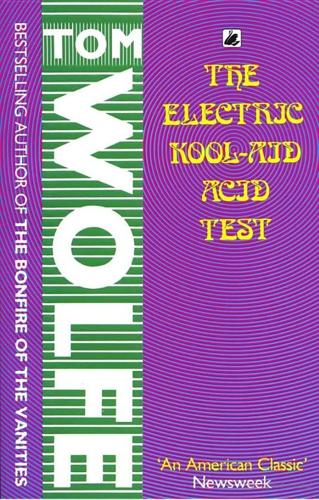
The Electric Kool-Aid Acid Test
by
Tom Wolfe
Published 1 Jan 1968
Kesey had been invited to Esalen to conduct a seminar entitled "A Trip with Ken Kesey." Nobody had quite counted on the entire fully wired and wailing Prankster ensemble, however. The clientele at Esalen had come a long way in a few weeks and many were beginning to peek over the edge of The Rut. And what they saw ... it could be scary out there in Freedomland. The Pranksters were friendly, but they glowed in the dark. They pranked about like maniacs in the serene Hot Springs. Precious few signed up for a trip with Ken Kesey, even in seminar form. Sandy, meanwhile, was swinging wildly from feelings of paranoia to feelings of godly . . .
…
Lois picks off the marshmallows one by one; Cool Breeze ascends into the innards of his gnome's hat; Black Maria, a Scorpio herself, rummages through the Zodiac; Stewart Brand winds it through the streets; paillettes explode—and this is nothing special, just the usual, the usual in the head world of San Francisco, just a little routine messing up the minds of the citizenry en route, nothing more than psyche food for beautiful people, while giving some guy from New York a lift to the Warehouse to wait for the Chief, Ken Kesey, who is getting out of jail. ABOUT ALL I KNEW ABOUT KESEY AT THAT POINT WAS THAT HE was a highly regarded 31-year-old novelist and in a lot of trouble over drugs. He wrote One Flew Over the Cuckoo's Nest (1962), which was made into a play in 1963, and Sometimes a Great Notion (1964). He was always included with Philip Roth and Joseph Heller and Bruce Jay Friedman and a couple of others as one of the young novelists who might go all the way.
…
Kesey was the wild new comet from the West heading christ knew where. Sometimes a Great Notion came out and the reviews ran from the very best to the very worst. In the daily New York Herald Tribune, Maurice Dolbier said: "In the fiction wilderness, this is a towering redwood." Granville Hicks said: "In his first novel, One Flew Over the Cuckoo's Nest, Ken Kesey demonstrated that he was a forceful, inventive and ambitious writer. All of these qualities are exhibited, in even higher degree, in Sometimes a Great Notion. Here he has told a fascinating story in a fascinating way." John Barkham of the Saturday Review said: "A novelist of unusual talent and imagination ... a huge, turbulent tale ..."
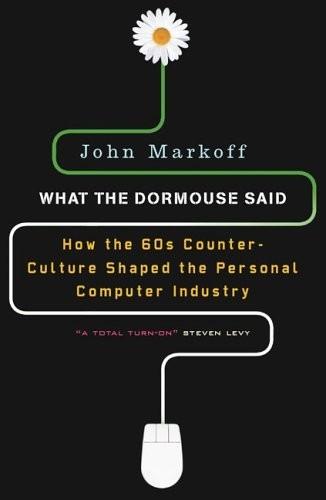
What the Dormouse Said: How the Sixties Counterculture Shaped the Personal Computer Industry
by
John Markoff
Published 1 Jan 2005
Originally a pizza-parlor folk-rock band known as the Warlocks, during the mid-sixties the Dead literally became the house band for the Midpeninsula, their concerts offering a ready-made identity for members of all of the area’s unruly threads of political and cultural unrest. The group had emerged directly from a set of wrenching, mind-expanding LSD parties orchestrated by Ken Kesey and his Merry Pranksters called Acid Tests, which would transform the culture of the Midpeninsula and ultimately the rest of the country. Now, more than three decades later, the sixties are at best a hazy apparition. The joke, of course, is that if you can remember the sixties, you weren’t really there.
…
Even after Stolaroff had come to know Hubbard well, he wasn’t certain where the truth lay. But he soon fell under Hubbard’s spell, viewing him as an especially powerful and articulate individual. Hubbard is intriguing in part because while most popular accounts of the introduction of LSD in America focus on the roles played by author Ken Kesey and psychologist Timothy Leary, Hubbard was an earlier proponent, and an important influence in the use of psychedelics by a number of Silicon Valley’s pioneering engineers. Hubbard, while he was the president of a Canadian uranium mine, had discovered psychedelics in the early 1950s when he participated in mescaline experiments at the University of Vancouver.
…
The economist arrived at one faculty tea with a young woman who was warily introduced by his host as Professor Veblen’s “daughter.” Veblen interjected tersely, “Madam, she is not my daughter!” leaving his host flustered. The bohemian tradition continued for half a century, and in 1959 a Stanford graduate student named Vic Lovell convinced young writer and fellow student Ken Kesey to take part in a series of experiments with psychedelic drugs being conducted at the Menlo Park Veterans’ Administration Hospital. Lovell later became the first coordinator of the Palo Alto Free University, and Kesey introduced the world at large to LSD through a series of ecstatic gatherings called Acid Tests, which were a harbinger for the making of a counterculture that was to explode on the national scene at Woodstock in 1969.

From Counterculture to Cyberculture: Stewart Brand, the Whole Earth Network, and the Rise of Digital Utopianism
by
Fred Turner
Published 31 Aug 2006
And if technology had finally begun to draw Americans toward a “cosmic consciousness,” well, the Indians had been there all along. Not long after he started working with the Warm Springs Indians, Brand read a book that seemed to confirm his inkling that Indians might hold the key to a nonhierarchical world, Ken Kesey’s 1962 novel One Flew Over the Cuckoo’s Nest. There Kesey told the story of McMurphy, an individualistic con man imprisoned in a mental hospital, and his struggle against his rigid, unfeeling floor manager, Nurse Ratched (also known as “Big Nurse”). His narrator was another patient, the Native American Chief Bromden
…
As he read One Flew Over the Cuckoo’s Nest and as he traveled from reservation to reservation, Brand, like Kesey, began to link his own struggle against hierarchy and his generation’s struggle against technocracy to a mythic American past. As he did so, however, he found a way to bring a countercultural version of that past to life. In 1963 Brand wrote a low-key letter introducing himself to Ken Kesey and soon after met him face-to-face. By that time, Kesey was not only an increasingly famous author, but the host of a burgeoning psychedelic scene on the San Francisco peninsula as well. In 1958 Kesey had come to Palo Alto as a graduate student in Stanford’s creative writing program. Over the next few years, the program admitted a stellar roster, including future novelists Larry McMurtry, Ed McClanahan, Robert Stone, and Gurney Norman.
…
In addition to product news, T h e W h o l e E a r t h C a t a l o g a s I n fo r m at i o n Te c h n o l o g y [ 81 ] the Supplement offered articles and letters from and about the communities Brand had visited. The first issue of the Supplement, for instance, included letters from Pranksters Ken Kesey and Ron Bevirt; Peter Rabbit of Drop City and, more recently, the Libre Commune; and Steve Durkee from the Lama Foundation, and an exchange between Steve Baer, who had designed the dome housing at Drop City, and Dave Evans, a staffer at Doug Engelbart’s Augmented Human Intellect project at the Stanford Research Institute.
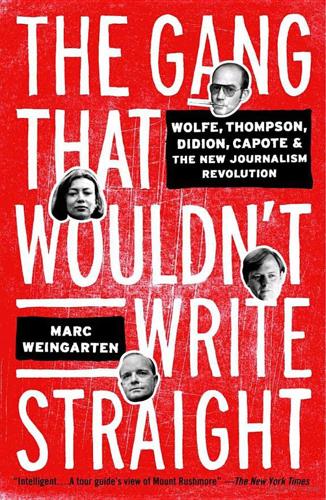
The Gang That Wouldn't Write Straight: Wolfe, Thompson, Didion, Capote, and the New Journalism Revolution
by
Marc Weingarten
Published 12 Dec 2006
Wolfe was a big fan of Cuckoo’s Nest—he could tell that Kesey had done his homework, New Journalism-style—but as it turned out, Kesey’s life story was every bit as intriguing. Ken Kesey was raised on a farm that his father owned in Springfeld, Oregon. Like Tom Wolfe Sr., Fred Kesey operated a collective, the Eugene Farmers Cooperative, which he turned into one of the biggest dairy operations in the state. A strapping athlete with literary aspirations, eighteen-year-old Ken Kesey enrolled in the University of Oregon in 1953 and earned a bachelor’s degree in journalism. In 1959 he received a creative writing fellowship from Stanford to study with Wallace Stegner.
…
“I had enough pieces for another collection, but I didn’t want to keep turning out collections,” said Wolfe. “I held off on publishing another one until I could get a real book done.” He found his book subject in July 1966, when he received a cache of letters from an anonymous sender. The letters, which were addressed to novelist Larry McMurtry, were written by author Ken Kesey, who had been busted for marijuana possession in April 1965 and again in January 1966 and had jumped bail to Mexico, where he was in exile. The letters had been passed along through the large network of Kesey’s friends and followers. Ed McClanahan, a writer and editor who had known Kesey when the two were in Wallace Stegner’s fiction writing class together at Stanford University, had sent the letters in the hope that Wolfe might want to write something about Kesey.
…
The reviews of the book, which was published in August 1968 on the same day as his second collection of articles, The Pump House Gang, were far more enthusiastic than the notices for The Kandy-Kolored Tangerine-Flake Streamline Baby. “The Electric Kool-Aid Acid Test is an astonishing book,” wrote C. D. B. Bryan in the New York Times Book Review. “Wolfe is precisely the right author to chronicle the transformation of Ken Kesey from respected author of ‘And One Flew Over the Cuckoo’s Nest’ [sic] to an LSD enthusiast…. Wolfe’s enthusiasm and literary fireworks make it difficult for the reader to remain detached.” The Nation’s critic Joel Lieber wrote, “You get excited reading this history. Its words reach as close to the feverishness of the thing itself as possible.”
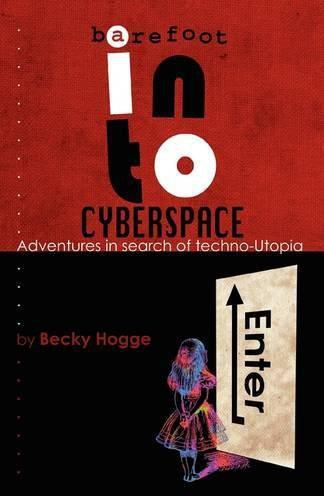
Barefoot Into Cyberspace: Adventures in Search of Techno-Utopia
by
Becky Hogge
,
Damien Morris
and
Christopher Scally
Published 26 Jul 2011
But his eyes are bright, and his old world courtesy combines well with his check shirt, leather waistcoat and slacks. I’m feeling very comfortable sitting across from him on a cosy sofa, as a particularly violent bout of January weather rages in the city outside. Brand is a 1960s original. When Tom Wolfe first came across him as one of Ken Kesey’s Merry Pranksters, madly driving a souped-up pickup through the streets of San Francisco, he recorded the encounter thus: Stewart Brand, a thin blonde guy with a blazing disk on his forehead too, and a whole necktie made of Indian beads. No shirt, however, just an Indian bead necktie on bare skin and a white butcher’s coat with medals from the King of Sweden on it.
…
What’s less known but equally certain is that these very same hippies were a driving force in the development of personal computer and internet culture. In so being, they bequeathed my generation – or at least the folk who know enough to make it to the Chaos Congress each year – the tools and the vision we would one day employ in an attempt to reboot that culture, to turn consumers back into participants. When I was 19, Ken Kesey came to my home town, Brighton, along with a reproduction of Furthur, the psychedelic school bus he and the Merry Pranksters first drove around the US in the late sixties on one long trip funded by the proceeds of selling Kesey’s film rights for One Flew Over the Cuckoo’s Nest. It was that journey that Tom Wolfe immortalised in The Electric Kool-Aid Acid Test.
…
As Brand tells me: “GBN happily does a lot of work with the national security people and the intelligence community in the US, who I love working for because they’re smart, engaged, serious public servants.” “We blew it.”, says Captain America to Billy in Easy Rider – the last piece of dialogue before the two of them get shot off their bikes by a Southern hick on the highway heading home from New Orleans. “WE BLEW IT!” chant Ken Kesey’s Merry Pranksters a year earlier in the final lines of Tom Wolfe’s novel. Well, the acid must have been good, if it helped them see that far into the future. But the acid turned out not to be that good, and that’s really the point of this interview. “I started using psychedelic drugs earlier than most and I stopped using psychedelic drugs earlier than most people started using them actually,” Brand laughs, “I had my last LSD in 1969, not because somebody shook their finger at me but because I was tired of bum trips.
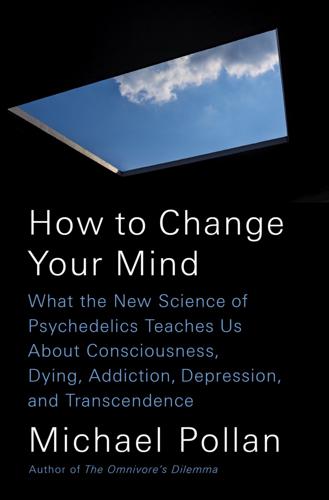
How to Change Your Mind: What the New Science of Psychedelics Teaches Us About Consciousness, Dying, Addiction, Depression, and Transcendence
by
Michael Pollan
Published 30 Apr 2018
Unbeknownst to Kesey, his first LSD trip was bought and paid for by the CIA, which had sponsored the Menlo Park research as part of its MK-Ultra program, the agency’s decade-long effort to discover whether LSD could somehow be weaponized. With Ken Kesey, the CIA had turned on exactly the wrong man. In what he aptly called “the revolt of the guinea pigs,” Kesey proceeded to organize with his band of Merry Pranksters a series of “Acid Tests” in which thousands of young people in the Bay Area were given LSD in an effort to change the mind of a generation. To the extent that Ken Kesey and his Pranksters helped shape the new zeitgeist, a case can be made that the cultural upheaval we call the 1960s began with a CIA mind-control experiment gone awry
…
Overhead, beneath the peak, is a massive round stained glass depicting “The Universality of the Mycelial Archetype”—an intricate tracery of blue lines on a night sky, the lines representing at once mycelium, roots, neurons, the Internet, and dark matter. Displayed on the walls heading upstairs from the living room are framed artworks, photographs, and keepsakes, including a diploma signifying the successful completion of one of the Merry Pranksters’ Acid Tests, signed by Ken Kesey and Neal Cassady. There are several photographs of Dusty posing in old-growth forests with impressive specimens of fungi and a colorfully grotesque print by Alex Grey, the dean of American psychedelic artists. The print is Grey’s interpretation of the so-called stoned ape theory, depicting an early, electrified-looking hominid clutching a Psilocybe while a cyclone of abstractions flies out of its mouth and forehead.
…
We watched as several of the attendees—I spotted Dr. Andrew Weil, best known for his books on holistic medicine; the psychedelic chemist Sasha Shulgin and his wife, Ann; and the New York Botanical Garden mycologist Gary Lincoff—arrived to great fanfare in a psychedelically painted school bus piloted by Ken Kesey. (The bus was called Farther, the successor to Further, the original Merry Prankster bus, evidently no longer roadworthy.) The proceedings looked more like a Dionysian revel than a conference, yet there were some serious talks. Jonathan Ott delivered a brilliant lecture on the history of “entheogens”—a term he helped coin.
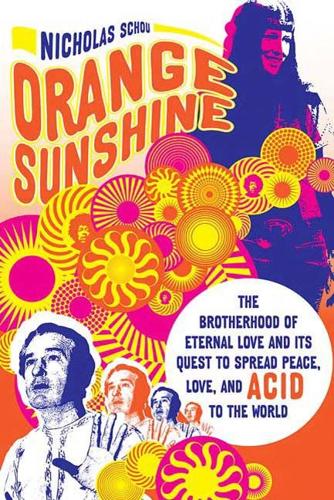
Orange Sunshine: The Brotherhood of Eternal Love and Its Quest to Spread Peace, Love, and Acid to the World
by
Nicholas Schou
Published 16 Mar 2010
At a September 19, 1966, press conference in New York City, Leary famously commanded everyone on the planet to “turn on, tune in, and drop out.” The trio of scholars had also established a commune at the Millbrook, New York, mansion of William Hitchcock, the son of a millionaire oil magnate whom Leary befriended while at Harvard. A procession of beatnik luminaries like Allen Ginsberg and Ken Kesey, and jazz musicians such as Thelonious Monk and Charles Mingus dropped by Millbrook in a never-ending parade of LSD-popping poets, socialites, and protohippies. One day, Hodgson showed up with his camera crew. “Leary welcomed us and gave us a tour and befriended me like a great friend,” Hodgson recalls.
…
It was a total success, a love feast, everybody loving each other. People talk today about ‘free love’ and think that means free sex. But that wasn’t happening en masse. What was happening was people freely loving each other.” As spring turned to summer, the new scene that was unveiling itself in California got even wilder. In San Francisco, Ken Kesey’s Merry Pranksters were still recovering from their whirlwind bus tour across America, captured in vivid, surreal detail in Tom Wolfe’s book Electric Kool Aid Acid Test. In June, groups like the Grateful Dead, Jefferson Airplane, the Byrds, Jimi Hendrix and the Who headlined at the Monterey Pop Festival.
…
Ackerly was living under the assumed name of Chris Wheat. He spent the Summer of Love with Tunnell dealing acid through their connections with the San Francisco chapter of the Hell’s Angels, which dealt LSD directly for Art Risley’s friend Owsley, the first chemist to figure out how to make LSD in tablet form. It was Owsley’s acid that enlivened Ken Kesey and the Merry Prankster’s so-called acid tests, wild days-long rites of weirdness that featured occasional efforts to play music by the Dead. Owsley, who now lives in Australia, insists he never dealt directly for anyone associated with the Brotherhood of Eternal Love. He refused to say anything about the group, whose members he dismisses as a “bunch of loose cannons on a ship of fools.”

The Innovators: How a Group of Inventors, Hackers, Geniuses and Geeks Created the Digital Revolution
by
Walter Isaacson
Published 6 Oct 2014
Doug Engelbart publishes “Augmenting Human Intellect.” 1963 Licklider proposes an “Intergalactic Computer Network.” Engelbart and Bill English invent the mouse. 1972 1964 Ken Kesey and the Merry Pranksters take bus trip across America. 1965 Ted Nelson publishes first article about “hypertext.” Moore’s Law predicts microchips will double in power each year or so. 1966 Stewart Brand hosts Trips Festival with Ken Kesey. Bob Taylor convinces ARPA chief Charles Herzfeld to fund ARPANET. Donald Davies coins the term packet switching. 1967 ARPANET design discussions in Ann Arbor and Gatlinburg. 1968 Larry Roberts sends out request for bids to build the ARPANET’s IMPs.
…
There was, in addition, one other major limiting factor: the only people who could use the Internet were those who had hands-on access to computers, which were still big, intimidating, costly, and not something you could run down to Radio Shack and buy. The digital age could not become truly transformational until computers became truly personal. Ken Kesey (1935–2001) holding a flute on the bus. Stewart Brand (1938– ). The first issue, fall 1968. CHAPTER EIGHT THE PERSONAL COMPUTER “AS WE MAY THINK” The idea of a personal computer, one that ordinary individuals could get their hands on and take home, was envisioned in 1945 by Vannevar Bush.
…
Technology should be made open and friendly and convivial rather than daunting and mysterious and Orwellian. As Lee Felsenstein, one of the avatars of many of these cultural strands, put it, “We wanted there to be personal computers so that we could free ourselves from the constraints of institutions, whether government or corporate.”5 Ken Kesey was a muse of the hippie strand of this cultural tapestry. After graduating from the University of Oregon, he went to the Bay Area in 1958 as a graduate student in Stanford’s creative writing program. While there, he worked the overnight shift at a mental hospital and signed up to be a guinea pig in a CIA-funded series of experiments, Project MKUltra, testing the effects of the psychedelic drug LSD.

Move Fast and Break Things: How Facebook, Google, and Amazon Cornered Culture and Undermined Democracy
by
Jonathan Taplin
Published 17 Apr 2017
The revolution began in the moral precepts of the counterculture: decentralize control and harmonize people. The earliest networks—like the Whole Earth ’Lectronic Link (WELL), organized by Stewart Brand, the founder of The Whole Earth Catalog—grew directly out of 1960s counterculture. Brand had helped novelist Ken Kesey organize the Acid Tests—epic be-ins where thousands of hippies ingested LSD and danced to the music of a new band, the Grateful Dead. Steve Jobs, founder of Apple Computer, Inc., dropped acid as well. “Jobs explained,” wrote John Markoff in his book What the Dormouse Said, “that he still believed that taking LSD was one of the two or three most important things he had done in his life, and he said he felt that because people he knew well had not tried psychedelics, there were things about him they couldn’t understand.”
…
The original mission of the Internet was hijacked by a small group of right-wing radicals to whom the ideas of democracy and decentralization were anathema. By the late 1980s, starting with eventual PayPal founder Peter Thiel’s class at Stanford University, the dominant philosophy of Silicon Valley would be based far more heavily on the radical libertarian ideology of Ayn Rand than the commune-based principles of Ken Kesey and Stewart Brand. Thiel, who was also an early investor in Facebook and is the godfather of what he proudly calls the PayPal Mafia, which currently rules Silicon Valley, has been clear about his credo, stating, “I no longer believe that freedom and democracy are compatible.” More important, Thiel says that if you want to create and capture lasting value, you should look to build a monopoly.
…
It is not an exaggeration to say that the work of Steve Jobs, Bill Gates, Larry Page, and Mark Zuckerberg stands on the shoulders of Doug Engelbart. Yet Engelbart’s vision of the computing future was different from today’s reality. In the run-up to the demonstration, Bill English had enlisted the help of Whole Earth Catalog publisher Stewart Brand, who had produced the Acid Tests with Ken Kesey two years earlier. Engelbart felt that Brand might help make his show into a multimedia event. Kesey and Brand’s LSD festival had forever cemented San Francisco’s link to what Fred Turner in his book From Counterculture to Cyberculture: Stewart Brand, the Whole Earth Network, and the Rise of Digital Utopianism describes as the New Communalists.
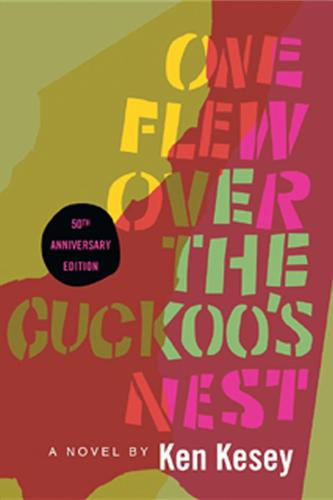
One Flew Over the Cuckoo's Nest: 50th Anniversary Edition
by
Ken Kesey
Published 19 Jan 2012
ONE FLEW OVER THE CUCKOO’S NEST ALSO BY KEN KESEY Sometimes a Great Notion Kesey’s Garage Sale Demon Box Caverns (with O. U. Levon) The Further Inquiry Sailor Song Little Tricker the Squirrel Meets Big Double the Bear The Sea Lion Last Go Round (with Ken Babbs) Kesey’s Jail Journal Ken Kesey ONE FLEW OVER THE CUCKOO’S NEST 50TH ANNIVERSARY EDITION VIKING VIKING Published by the Penguin Group Penguin Group (USA) Inc., 375 Hudson Street, New York, New York 10014, U.S.A. Penguin Group (Canada), 90 Eglinton Avenue East, Suite 700, Toronto, Ontario, Canada M4P 2Y3 (a division of Pearson Penguin Canada Inc.)
…
Penguin Books Ltd, 80 Strand, London WC2R 0RL, England Penguin Ireland, 25 St Stephen’s Green, Dublin 2, Ireland (a division of Penguin Books Ltd) Penguin Books Australia Ltd, 250 Camberwell Road, Camberwell, Victoria 3124, Australia (a division of Pearson Australia Group Pty Ltd) Penguin Books India Pvt Ltd, 11 Community Centre, Panchsheel Park, New Delhi – 110 017, India Penguin Group (NZ), 67 Apollo Drive, Rosedale, Auckland 0632, New Zealand (a division of Pearson New Zealand Ltd) Penguin Books (South Africa) (Pty) Ltd, 24 Sturdee Avenue, Rosebank, Johannesburg 2196, South Africa Penguin Books Ltd, Registered Offices: 80 Strand, London WC2R 0RL, England First published in 2012 by Viking Penguin, a member of Penguin Group (USA) Inc. 10 9 8 7 6 5 4 3 2 1 Copyright © Ken Kesey, 1962 Copyright renewed Ken Kesey, 1990 All rights reserved EISBN: 9781101575277 Printed in the United States of America All rights reserved. No part of this book may be reproduced, scanned, or distributed in any printed or electronic form without permission. Please do not participate in or encourage piracy of copyrighted materials in violation of the author’s rights.

Tripping on Utopia: Margaret Mead, the Cold War, and the Troubled Birth of Psychedelic Science
by
Benjamin Breen
Published 16 Jan 2024
As atomic tensions escalated in 1961, the possibility that mind-altering drugs could be used to precipitate global nuclear war cast a haunting shadow on the hopeful promise of mind expansion. Leary’s letter to Mead in the spring of 1961 came, in fact, at a time when this fear of drugs as tools of psychological manipulation was reaching its cultural zenith. In the month that Leary wrote Mead, Ken Kesey was working as an orderly at the Palo Alto VA hospital, the same institution where Gregory Bateson worked as a medical anthropologist. Kesey had already begun writing One Flew Over the Cuckoo’s Nest, a celebrated novel in which new drugs like Miltown and Thorazine appear as pharmacological weapons.
…
Adams had once been a true believer. Ginsberg, in a sense, still was. It was this shared utopian sensibility, this deep idealism, that sparked their friendship. When Ginsberg labeled the tape of his conversation with Adams, he gave it an ironic title: “Acid Test.” One of the first acid tests—the name Ken Kesey and his followers gave to their parties—was in fact happening about three hours’ drive north of Adams’s cabin at the moment that they were discussing the strange events at the Mental Research Institute. Ginsberg’s name was even on the poster. But he didn’t show. Far more than his peers in the emerging psychedelic counterculture, Ginsberg was intrigued by the scientists, not the partiers.
…
And he also believed that the new American messiahs of psychedelic spirituality were getting something fundamentally wrong. Psychedelic science had always been a global project, winning adherents in places like Prague, Zurich, London, and even Baghdad years before it reached relative latecomers like Ken Kesey and Timothy Leary. The psychedelic counterculture was, at least at first, no less global. In Brazil, artist Hélio Oiticica created overtly “trippy” interactive artworks, inspiring a generation-defining cultural movement known as Tropicália. In Santiago, Chile, a young physician named Claudio Naranjo returned from a Fulbright scholarship at Harvard, where he took mushrooms with Frank Barron, believing psychedelics were tools for “a collective transformation of consciousness.”
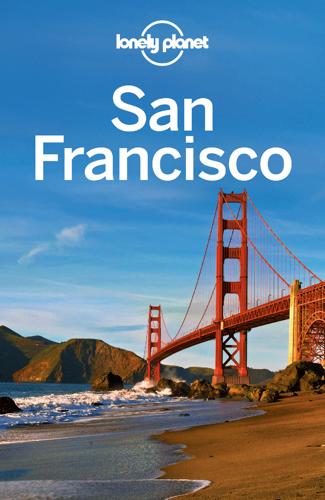
San Francisco
by
Lonely Planet
Flower Power San Francisco would continue to be a testing ground for freedom of expression in the years to come, as comedian Lenny Bruce uttered the F-word on stage and burlesque dancer Carol Doda bared it all for titillated audiences in North Beach clubs. But neither jokes nor striptease would pop the last button of conventional morality in San Francisco – no, that was a job for the CIA. In a pronounced lapse in screening judgment, the CIA hired local writer Ken Kesey to test psychoactive drugs intended to create the ultimate soldier. Instead, they unwittingly inspired Kesey to write the novel One Flew Over the Cuckoo’s Nest, drive psychedelic busloads of Merry Pranksters across country, and introduce San Francisco to LSD and the Grateful Dead at the legendary Acid Tests.
…
Ads breathlessly gushed that Hewlett-Packard’s ‘light’ (40lb) machine could ‘take on roots of a fifth-degree polynomial, Bessel functions, elliptic integrals and regression analysis’ – all for the low, low price of $4,900 (about $29,000 today). Consumers didn’t know what to do with such a computer, until its potential was explained in simple terms by Stewart Brand, an LSD tester for the CIA with Ken Kesey and organizer of the first Trips Festival in 1966. In his 1969 Whole Earth Catalog, Brand reasoned that the technology governments used to run countries could empower ordinary people. That same year, University of California, Los Angeles, professor Len Kleinrock sent the first rudimentary email from a computer in Los Angeles to another at Stanford.
…
The Japanese American Citizens League files civil rights claims. 1957 City Lights wins a landmark ruling against book banning over the publication of Allen Ginsberg’s Howl, and free speech and free spirits enjoy a reprieve from McCarthyism. 1959 Mayor George Christopher authorizes crackdowns on cruising areas and gay bars and starts a blacklist of gay citizens. January 21–23, 1966 The Trips Festival is organized by techno-futurist Stewart Brand, and features author Ken Kesey, the Grateful Dead, Janis Joplin, Native American activists and Hells Angels. October 1966 In Oakland, Huey Newton and Bobby Seale found the Black Panther Party for Self-Defense, a black-power group that demanded ‘Land, Bread, Housing, Education, Clothing, Justice and Peace.’ January 14, 1967 The Summer of Love kicks off with the Human Be-In, with draft cards used as rolling papers, free Grateful Dead performances and Allen Ginsberg naked as usual. 1969 The first computer link is established between Stanford Research Institute and UCLA via ARPANET.
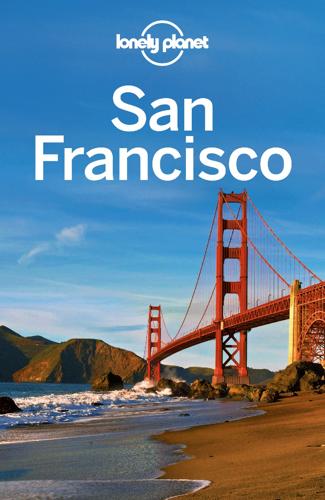
San Francisco
by
Lonely Planet
Flower Power San Francisco would continue to be a testing ground for freedom of expression in the years to come, as comedian Lenny Bruce uttered the F-word on stage and burlesque dancer Carol Doda bared it all for titillated audiences in North Beach clubs. But neither jokes nor striptease would pop the last button of conventional morality in San Francisco – no, that was a job for the CIA. In a pronounced lapse in screening judgment, the CIA hired local writer Ken Kesey to test psychoactive drugs intended to create the ultimate soldier. Instead, they unwittingly inspired Kesey to write the novel One Flew Over the Cuckoo’s Nest, drive psychedelic busloads of Merry Pranksters across country, and introduce San Francisco to LSD and the Grateful Dead at the legendary Acid Tests.
…
Ads breathlessly gushed that Hewlett-Packard’s ‘light’ (40lb) machine could ‘take on roots of a fifth-degree polynomial, Bessel functions, elliptic integrals and regression analysis’ – all for the low, low price of $4,900 (about $29,000 today). Consumers didn’t know what to do with such a computer, until its potential was explained in simple terms by Stewart Brand, an LSD tester for the CIA with Ken Kesey and organizer of the first Trips Festival in 1966. In his 1969 Whole Earth Catalog, Brand reasoned that the technology governments used to run countries could empower ordinary people. That same year, University of California, Los Angeles, professor Len Kleinrock sent the first rudimentary email from a computer in Los Angeles to another at Stanford.
…
The Japanese American Citizens League files civil rights claims. 1957 City Lights wins a landmark ruling against book banning over the publication of Allen Ginsberg’s Howl, and free speech and free spirits enjoy a reprieve from McCarthyism. 1959 Mayor George Christopher authorizes crackdowns on cruising areas and gay bars and starts a blacklist of gay citizens. January 21–23, 1966 The Trips Festival is organized by techno-futurist Stewart Brand, and features author Ken Kesey, the Grateful Dead, Janis Joplin, Native American activists and Hells Angels. October 1966 In Oakland, Huey Newton and Bobby Seale found the Black Panther Party for Self-Defense, a black-power group that demanded ‘Land, Bread, Housing, Education, Clothing, Justice and Peace.’ January 14, 1967 The Summer of Love kicks off with the Human Be-In, with draft cards used as rolling papers, free Grateful Dead performances and Allen Ginsberg naked as usual. 1969 The first computer link is established between Stanford Research Institute and UCLA via ARPANET.
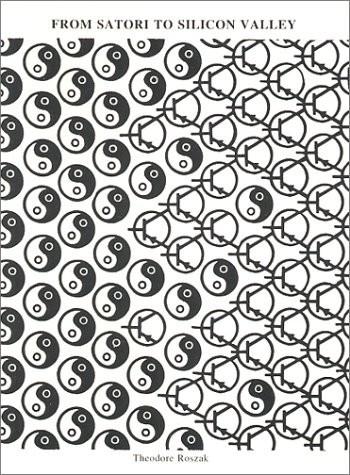
From Satori to Silicon Valley: San Francisco and the American Counterculture
by
Theodore Roszak
Published 31 Aug 1986
it is Nor not the are the corporate leaders of the industrial world so easily outsmarted and outflanked 48 as the Fullerite technophiles always wanted to believe. no slouches when elites are their interests. it comes They can outspend Moneyed to defending their opposition; they can outwait and outwit their enemies by hiring the brains they It is need as well as the brute power. we now sad in the extreme to know, as do, Ken Kesey and Timothy Leary brought of LSD to the streets, the CIA had long that, before the gospel since undertaken an exhaustive run of experiments with the hallucinogens using human beings as guinea pigs to explore the possibilities of mind control. Similarly, it now seems abundantly clear that long before the personal computer has the chance to restore democratic values, the major corporations and the security agencies of the world will have used the technology to usher in a surveillance and control. satellite, we can be As new for the space rocket colony, the military will already be frontier and sure that by the time the L-5 Society has raised the funds for high era of advanced its first modest encamped on the armed with unheard-of genocidal weaponry.

Surveillance Valley: The Rise of the Military-Digital Complex
by
Yasha Levine
Published 6 Feb 2018
The way he described it, you’d think that working for ARPA was the most subversive thing a person could do. Cults and Cybernetics Brand was thirty-four and already a counterculture celebrity when he visited Stanford’s AI Lab. He had been the publisher of the Whole Earth Catalog, a wildly popular lifestyle magazine for the commune movement. He ran with Ken Kesey and his LSD-dropping Merry Pranksters, and he had played a central role in setting up and promoting the psychedelic concert where the Grateful Dead debuted and rang in San Francisco’s Summer of Love.10 Brand was deeply embedded in California’s counterculture and appeared as a major character in Tom Wolfe’s The Electric Kool-Aid Acid Test.
…
He hooked up with Kesey and the Merry Pranksters, took a lot of psychedelic drugs, partied, made art, and participated in an experimental program to test the effects of LSD that, unknown to him, was secretly being conducted by the Central Intelligence Agency as part of its MK-ULTRA program.14 While the New Left protested against the war, joined the civil rights movement, and pushed for women’s rights, Brand took a different path. He belonged to the libertarian wing of the counterculture, which tended to look down on traditional political activism and viewed all politics with skepticism and scorn. Ken Kesey, author of One Flew Over the Cuckoo’s Nest and a spiritual leader of the hippie-libertarian movement, channeled this sensibility when he told thousands of people assembled at an anti–Vietnam War rally at UC Berkeley that their attempt to use politics to stop the war was doomed to failure. “Do you want to know how to stop the war?”
…
It compared the lobbying work the EFF was doing on behalf of its powerful telecom donors to the authority-bucking counterculture scene of the 1960s Bay Area. “In some ways, they are the Merry Pranksters, those apostles of LSD, who tripped through the 1960s in a psychedelic bus named Furthur, led by novelist Ken Kesey and chronicled by Tom Wolfe in The Electric Kool-Aid Acid Test,” wrote Wired journalist Joshua Quittner in a profile of the EFF’s move to Washington, DC.104 “Older and wiser now, they’re on the road again, without the bus and the acid, but dispensing many similar-sounding bromides: Turn on, jack in, get connected.

Western USA
by
Lonely Planet
San Francisco became a testing ground for civil rights and free speech, with Beat poet Lawrence Ferlinghetti and City Lights Bookstore winning a landmark 1957 ruling against book banning over the publication of Allen Ginsberg’s splendid, incendiary Howl and Other Poems. The Central Intelligence Agency (CIA) hoped an experimental drug called LSD might turn San Francisco test subject Ken Kesey into the ultimate fighting machine, but instead the author of One Flew Over the Cuckoo’s Nest slipped some into Kool-Aid and kicked off the psychedelic ’60s. The Summer of Love meant free food, love and music in the Haight until the ’70s, when enterprising gay hippies founded an out-and-proud community in the Castro.
…
OREGON FACTS »Nickname Beaver State »Population 3,831,074 »Area 95,997 sq miles »Capital city Salem (population 154,637) »Other cities Portland (population 583,776), Eugene (population 156,185), Bend (population 76,639) »Sales tax Oregon has no sales tax »Birthplace of former US president Herbert Hoover (1874–1964), writer and Merry Prankster Ken Kesey (1935–2001), actress and dancer Ginger Rogers (1911–95), The Simpsons creator Matt Groening (b 1954), filmmaker Gus Van Sant (b 1952) »Home of Oregon Shakespeare Festival, tree-sitting, Nike, McMenamins »Politics Democratic governor, Democrat majorities in Congress, Democrat in Presidential elections since 1984 »Famous for the Oregon Trail, forests, rain, beer, not being able to pump your own gas »State beverage milk (dairy’s big here) »Driving distances Portland to Eugene 110 miles, Pendleton to Astoria 295 miles Portland If you want to see what the future looks like, come to Portland, Oregon, a city that is 10 years ahead of its time and as definitive of its age as the Rome of Caesar or the Paris of Haussmann.
…
While the downtown’s no oil painting, Eugene wins kudos for its academic institution, the magnificently landscaped University of Oregon, which also doubles up as an arboretum. Elsewhere Eugene is an underneath-the-surface kind of place where some gentle prodding reveals running trails, workers coops and the odd aging Merry Prankster. The Prankster’s original psychedelic bus, Further, remains at the farm of former Eugene resident Ken Kesey in Pleasant Hill, 10 miles away. Sights & Activities As the city that gave the world Nike, Eugene (or ‘Tracktown’ as it likes to call itself) safeguards some of the best running facilities in the nation. Many trails hug the Willamette River and some are floodlit after dark. Alton Barker Park PARK Eugene’s largest park is renowned for its running trails, most notably the wood-chip Pre’s Trail named for Eugene’s Olympian running icon Steve Prefontaine, who was killed in a car crash in 1975.

Palo Alto: A History of California, Capitalism, and the World
by
Malcolm Harris
Published 14 Feb 2023
He split before East Coast capital and government profit controls started eating electronics start-ups for breakfast. xii While at Stanford, Tim interned—where else?—at HP. Chapter 3.3 Personal Revolution Computers as Human Augmentation—LSD as Human Augmentation—Bob Kaufman: Black, Communist, Beat—Ken Kesey and Other CIA Experiments As so often happens on frontiers, land filled up fast in Silicon Valley, and settlers became workers. The Santa Clara County of the 1960s was heavily dependent on the federal government, and electronics industry fortunes rose and fell with defense spending like a small boat riding big waves.
…
Marketer turned poet impresario Allen Ginsberg turned on to acid under the observation of Palo Alto’s Mental Research Institute a few years after he piqued America’s interest with his claim to know the best minds of his generation and where to find them.19 A Stanford creative-writing hotshot named Ken Kesey was turning on around the same time, right down the road.20 It was all so characteristically binary, and it appealed to the cultural elites in a rising generation, one with an ambivalent relationship to conventional success. Beat On March 31, 1973, at the Palo Alto Culture Center, the poet Bob Kaufman recited a speech from T.
…
The hippies wanted out, too, going “back to the land,” or at least taking some really long road trips. In the process they rebranded what it meant to be down and out. Surrounded by so much historical unfairness and noble defeat, how did white suburban winners in Palo Alto come to convince themselves and a surprising segment of the world that they were the real loser rebels? The case of Ken Kesey is illustrative. A college wrestling champion at Oregon, Kesey polarized the creative-writing community as a Stanford graduate student in the late 1950s. Program director Wallace Stegner thought the charismatic and rebellious Kesey a clown, but other faculty spied promise, including novelist Malcolm Cowley.

Gonzo: The Life of Hunter S. Thompson
by
Corey Seymour
,
Johnny Depp
and
Jann S. Wenner
Published 31 Oct 2007
I tried to do that once, and it’s a lot harder than it looks.” PAUL SEMONIN Hunter spoke about the Hells Angels in a strange kind of way. There was an identification with the Angels as outcasts—downtrodden outcasts, and victims, if you will. He saw them as a kind of emblem of honor and rebellion. It wasn’t only Hunter, but people like Ken Kesey as well who somehow thought that an alliance between the Hells Angels and the peace movement was going to make or break the whole struggle. They invested a lot of their energy into that. I think Hunter’s perspective on this goes back to his kind of survivalist character, the way that he identified with some of these extreme elements that were actually quite right-wing.
…
They would take Seconal with beer, and when all that kicked in, they would be monsters. He’d stay until he knew they’d taken the Seconal, and then he couldn’t leave soon enough. Sonny would come over, and Tiny. I remember going to a couple Hells Angels parties, but we didn’t stay late. And of course there was the party at Ken Kesey’s. Hunter had met Kesey at a radio show, and Kesey said, “I’m kind of interested in the Hells Angels. Do you think they might want to come and meet my friends?” Hunter told him that he could arrange that, and then one Sunday he said to me, “Let’s go for a drive.” Which was really bizarre: Hunter, on a Sunday afternoon, like a normal human being, saying, “Let’s take the little family for a drive.”
…
In fact, the first installment of the Rolling Stone version of “The Right Stuff” opens with a lede passage that’s an homage to Hunter’s style. TOM WOLFE Hunter had been very kind to me when I was writing The Electric Kool-Aid Acid Test. I had gathered from Hell’s Angels that he had been present when Ken Kesey and his Merry Pranksters gave a party for the Hells Angels, which had happened before I had even known about Kesey and the Pranksters. I called Hunter up from out of the blue, and he sent me some tapes he had recorded at that crazy party, which was really generous of him. JANN WENNER Hunter appreciated New Journalism and read its practitioners.
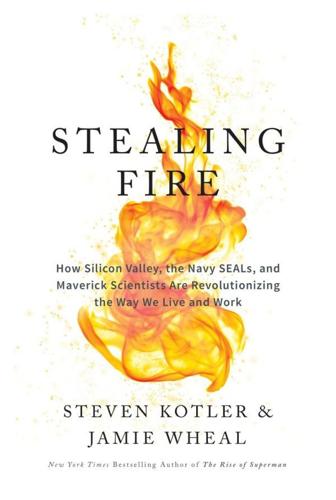
Stealing Fire: How Silicon Valley, the Navy SEALs, and Maverick Scientists Are Revolutionizing the Way We Live and Work
by
Steven Kotler
and
Jamie Wheal
Published 21 Feb 2017
A few scholars have focused on a singular detail—that magic flute whose tune none can resist—and argued this might actually be a story about the irresistible attraction of music, dance, and trance, against which a stern medieval church could not compete. So while we usually tell the Pied Piper story as a morality play, a reminder to pay your debts and keep your word, it might actually be a warning about the lure of ecstasis. This is no idle warning. History is littered with tales of ecstatic explorations gone wrong. Consider the 1960s. Ken Kesey snuck LSD out of a Stanford research lab and all manner of tie-dyed hell broke loose. The same thing happened with the sexual revolution of the 1970s. What began as a quest for personal liberation ended up in spiking rates of marital dissatisfaction and divorce. And 1990’s rave culture too, which blended synthetic drugs with electronic music, collapsed under a series of tightening legal restrictions, ER visits, and tabloid fodder.
…
They repeatedly dosed mental patients and prompted one of their own, a chemist at Fort Detrick’s Biological Weapons Center,18 to jump or get thrown (the evidence is conflicting) out a thirteenth-story New York City hotel window. And, in the annals of unintended consequences, MK-ULTRA gets a notable mention for accidentally unleashing a leviathan: the psychedelic revolution of the 1960s. Almost exactly twenty-five hundred years after Alcibiades’s first stole kykeon, a young student named Ken Kesey poached some too—only this time it was from the CIA. Like Alcibiades, Kesey was disarmingly persuasive and controversial, wangling his way to a tuition-free spot in a graduate writing seminar at Stanford and enduring a criminal trial and exile of his own. Just as Socrates had doubted whether Alcibiades was a worthy pupil, Wallace Stegner, the literary lion who headed the writing department at Stanford, didn’t think much of Kesey, either.
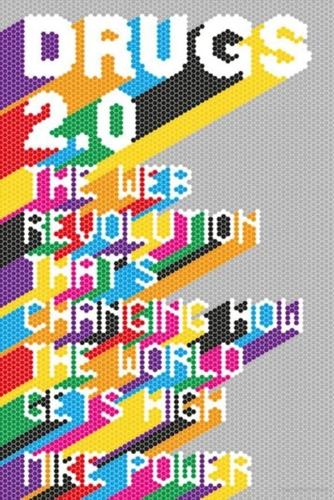
Drugs 2.0: The Web Revolution That's Changing How the World Gets High
by
Mike Power
Published 1 May 2013
Huxley, Osmond and Mayhew’s hydrochloride was lab-made, but synthetic – and the dose was 400 mg. LSD was active at just 100 μg (micrograms). One small lab could produce enough LSD to dose millions of people. In America, the drug plotted a course from the clinic to the street, just as it would in the UK. Author Ken Kesey, and Harvard professors Timothy Leary and Richard Alpert were among those who evangelized about the substance, believing its use would herald a new age of human consciousness. Owsley Stanley, the world’s most exacting and prolific LSD chef who supplied the majority of America’s West Coast with LSD in the 1960s, claimed he made so much acid not because he wanted to change the world, but rather because it was almost impossible not to make vast quantities of the drug once the synthesis had been embarked upon.
…
It now reads much like a printed blog; it was a paper website, in the words of blogger and author Kevin Kelly, that was sprinting before the web even took its first shaky steps.3 Its statement of intent in its launch issue reads like a manifesto that has been realized by today’s web users: ‘A realm of intimate personal power is developing – the power of the individual to conduct his own education, find his own inspiration, shape his own environment, and share his adventure with whoever is interested. Tools that aid this process are sought and promoted by the Whole Earth Catalog.’ Brand, whose collaborations with Ken Kesey’s Merry Pranksters would evolve into the Acid Tests, the 1960s proto-raves fuelled by LSD and documented by Tom Wolfe in The Electric Kool-Aid Acid Test, felt that information technology was the next stage in humans’ evolutionary progress. Info-anarchists and cyber-utopians not only laid the foundations for the internet, but would act as outriders for the free software movement.
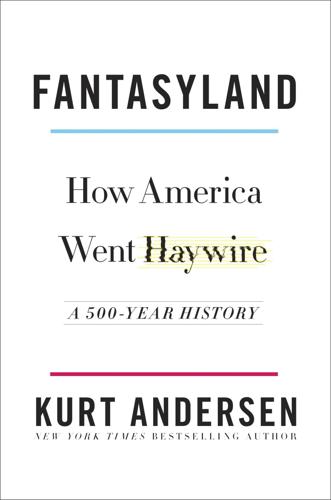
Fantasyland: How America Went Haywire: A 500-Year History
by
Kurt Andersen
Published 4 Sep 2017
His new institute embraced the radical notion that psychosis and other mental illnesses were labels imposed by the straight world on eccentrics and visionaries, that they were primarily tools of coercion and control, not legitimate medical conditions at all. This was the big idea behind Ken Kesey’s bestselling novel One Flew Over the Cuckoo’s Nest, of course. (In the summer of 1964, one stop on his legendary transcontinental ur-hippie bus tour was Esalen, where he conducted a workshop called “A Trip with Ken Kesey.”) And within the psychiatric profession itself, this idea had two influential proponents, who both published unorthodox manifestos at the beginning of the decade—R. D. Laing (The Divided Self: An Existential Study in Sanity and Madness) and Thomas Szasz (The Myth of Mental Illness).
…
Suddenly America had more teenagers than ever before, and a much larger fraction of young people living together on college campuses, plus prosperity, mass media reflecting the new youthquake back to the youth, and an escalating war that teenagers were drafted to fight.*1 The American bohemian idea could roll out and cross over and scale, from the angsty Beat beta version to the 1960s mass-market viral app fully compatible with the ever-expanding fantasy-industrial complex. — IN 1962 PEOPLE started referring to “hippies,” the Beatles had their first hit, Ken Kesey published One Flew Over the Cuckoo’s Nest, and the Harvard psychology teacher Timothy Leary was handing out psilocybin and LSD to students. And three hours south of San Francisco, on the heavenly stretch of coastal cliffs known as Big Sur, a pair of young Stanford psychology graduates, one of them pals with Kerouac and Ginsberg, founded a school and think tank they named after a tiny Indian tribe that had lived on the grounds long before.
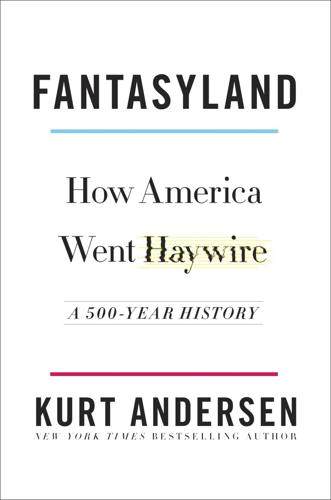
Fantasyland
by
Kurt Andersen
Published 5 Sep 2017
His new institute embraced the radical notion that psychosis and other mental illnesses were labels imposed by the straight world on eccentrics and visionaries, that they were primarily tools of coercion and control, not legitimate medical conditions at all. This was the big idea behind Ken Kesey’s bestselling novel One Flew Over the Cuckoo’s Nest, of course. (In the summer of 1964, one stop on his legendary transcontinental ur-hippie bus tour was Esalen, where he conducted a workshop called “A Trip with Ken Kesey.”) And within the psychiatric profession itself, this idea had two influential proponents, who both published unorthodox manifestos at the beginning of the decade—R. D. Laing (The Divided Self: An Existential Study in Sanity and Madness) and Thomas Szasz (The Myth of Mental Illness).
…
Suddenly America had more teenagers than ever before, and a much larger fraction of young people living together on college campuses, plus prosperity, mass media reflecting the new youthquake back to the youth, and an escalating war that teenagers were drafted to fight.*1 The American bohemian idea could roll out and cross over and scale, from the angsty Beat beta version to the 1960s mass-market viral app fully compatible with the ever-expanding fantasy-industrial complex. — IN 1962 PEOPLE started referring to “hippies,” the Beatles had their first hit, Ken Kesey published One Flew Over the Cuckoo’s Nest, and the Harvard psychology teacher Timothy Leary was handing out psilocybin and LSD to students. And three hours south of San Francisco, on the heavenly stretch of coastal cliffs known as Big Sur, a pair of young Stanford psychology graduates, one of them pals with Kerouac and Ginsberg, founded a school and think tank they named after a tiny Indian tribe that had lived on the grounds long before.
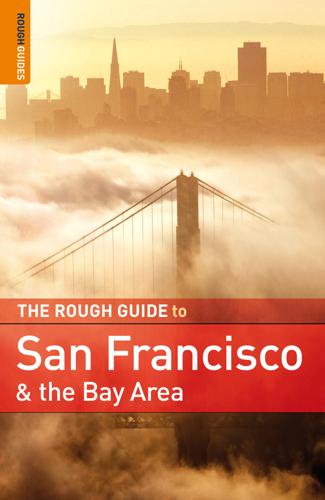
Rough Guide to San Francisco and the Bay Area
by
Nick Edwards
and
Mark Ellwood
Published 2 Jan 2009
Even if experimentation with narcotics was not initially the central tenet of hippie life, it grew in importance as the movement matured, notably the use of LSD or acid. The pivotal event that crystallized many of the traits popularly associated with the hippies came in January 1966, when early LSD guinea pig and Stanford drop-out Ken Kesey and his Merry Pranksters hosted a “Trips Festival” in the Longshoremen’s Hall at Fisherman’s Wharf. The Pranksters handed out flyers asking “Can you pass the acid test?” and the festival was attended by thousands, most on acid. Along with a “Be-In” at Golden Gate Park later the same year, the festival set a precedent for wild living, challenging authority, and dropping out of the social and political establishment.
…
The university, whose reputation as an arch-conservative thinktank was enhanced by Ronald Reagan’s offer to donate his video library to the school (Stanford politely declined), hasn’t always been an entirely boring place, though you wouldn’t know it to walk among the preppy future-lawyers-of-America that seem to comprise the majority of the student body. Ken Kesey came here from Oregon in 1958 on a writing fellowship, working nights as an orderly on the psychiatric ward of one local hospital, and getting paid $75 a day to test experimental drugs (LSD among them) in another. Drawing on both experiences, Kesey wrote One Flew over the Cuckoo’s Nest in 1960 and quickly became a counter-culture hero, a period admirably chronicled by Tom Wolfe in The Electric Kool-Aid Acid Test.
…
About half the land between San Jose and the coast is protected from development in a variety of state and county parks, all of which are virtually deserted; any one of a dozen roads heads through endless stands of untouched forest, and even the briefest of walks will take you seemingly miles from any sign of civilization. Hwy-84 climbs up from San Gregorio through the Sam McDonald County Park to the hamlet of LA HONDA, where Ken Kesey had his ranch during the Sixties and once notoriously invited the Hell’s Angels to a party. From here you can continue on to Palo Alto, or, better still, loop back to the coast via Pescadero Road. A mile before you reach the coast, you pass through the quaint town of PESCADERO, which has one of the best places to eat on the Peninsula – A Duarte’s, 202 Stage Rd (t 650/879-0464), where you can feast on artichoke soup and huge portions of fish in a downhome atmosphere.
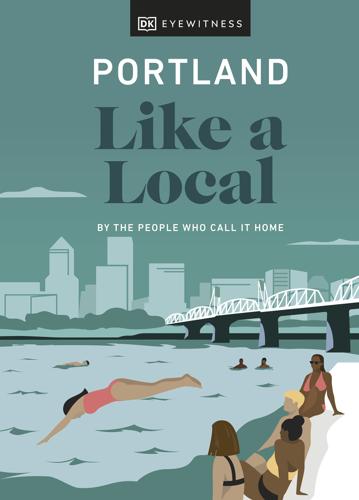
Portland Like a Local
by
DK
Come during winter or spring to catch it at its most powerful and most spectacular. g Nearby Getaways g Contents Google Map EUGENE 2-hour drive from the city; www.eugenecascadescoast.org Sure, San Francisco played a key role in the counterculture boom, but it wasn’t the only spot on the West Coast to do so. This leafy town (home of the writer and psychedelic pioneer Ken Kesey) was an important co-conspirator in the hippie movement – and not much has changed since the 1960s. Locals still wander around in Birkenstocks and tie-dye outfits; you can’t throw a rock without hitting a cannabis dispensary; and you’re never more than a block or two from a veggie or vegan restaurant.

Moon Coastal Oregon
by
Judy Jewell
and
W. C. McRae
Published 13 Jul 2020
If you find one, it’s yours to keep; you can call or stop in at the visitors center for a certificate and information about the artist who created it. The Legacy of Ken Kesey Two miles south of Lincoln City, you’ll come to the turnoff for Highway 229 along the Siletz River. If you drive down the north side of the river about 1.25 miles, on the opposite shore you’ll notice a showy Victorian-ish house. It was constructed for the movie version of Sometimes a Great Notion. The 1971 film, a so-so adaptation of Ken Kesey’s memorable novel, starred Paul Newman, Lee Remick, Henry Fonda, and Michael Sarrazin. The plot concerns the never-say-die spirit of an antiunion timber baron, his not-always-supportive family, and life in the mythical Coast Range logging community of Wakonda.

Valley of Genius: The Uncensored History of Silicon Valley (As Told by the Hackers, Founders, and Freaks Who Made It Boom)
by
Adam Fisher
Published 9 Jul 2018
They had built tools to build tools: This whole recursive “bootstrap” idea, starting with the system itself, and working all the way up through augmenting the human intellect, was just mind-boggling. It informs us today, still. Steve Jobs: We humans are tool builders. We can fashion tools that amplify these inherent abilities that we have to spectacular magnitudes. And so for me, a computer has always been a bicycle of the mind. Ken Kesey: It’s the next thing after acid! Steve Jobs: Something that takes us far beyond our inherent abilities. Bill Paxton: A lot of people in the audience that day were profoundly impacted by it and went out and said, “How can I do this?” Ready Player One The first T-shirt tycoon The earliest computers were war machines, and in the beginning Silicon Valley ran on Defense Department contracts.
…
Max Kelly first came to San Francisco as part of an experimental band called Sound Traffic Control. After the 9/11 terrorist attack, he joined the FBI and worked in their Computer Forensics Lab. That led to a job with Facebook in 2005 as its first chief security officer. After five years he returned to government service—this time with the National Security Agency. Ken Kesey, the novelist, lived on Palo Alto’s bohemian Perry Lane during the fifties and early sixties. While the engineers around him were creating what would become Silicon Valley, Kesey and his sidekick, Stewart Brand, were organizing the Acid Tests—public LSD-taking parties that, more than anything else, popularized the then-obscure drug.
…
His quotes have been gathered from a number of sources: “Engelbart and the Dawn of Interactive Computing,” an event hosted by SRI in December 2008; “Engelbart’s Unfinished Revolution,” a symposium produced by Stanford University Libraries and the Institute for the Future in December 1998; a Smithsonian Institute interview by Jon Eklund, conducted in May 1994; and two interviews by Judy Adams and Henry Lowood of Stanford, the first conducted in December 1986 and the second in April 1987. Steve Jobs’s quotes in this chapter and others are from Steve Jobs: The Lost Interview conducted by Robert Cringely, and the 1990 documentary Memory & Imagination: New Pathways to the Library of Congress by Michael Lawrence and Julian Krainen. Ken Kesey’s “next thing after acid” quote can be found in John Markoff’s excellent history, What the Dormouse Said. Ready Player One Ted Dabney’s quotes are taken from the RetroGaming Roundup podcast #24, October 2010, conducted by Mike Kennedy, Mike James, and Scott Schreiber, as well as the Computer History Museum’s 2012 oral history of Ted Dabney.
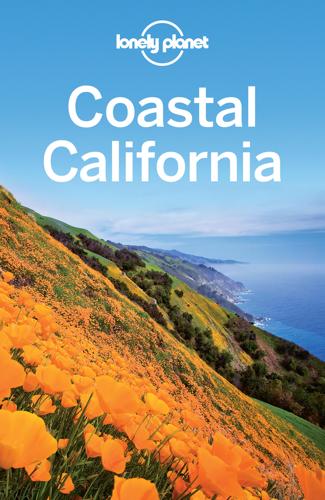
Coastal California
by
Lonely Planet
Marina & the Presidio Boutiques, organic dining, peace and public nudity at a former army base. Golden Gate Park & the Avenues SF’s mile-wide wild streak, surrounded by gourmet hangouts for hungry surfers. The Central Intelligence Agency (CIA) hoped an experimental drug called LSD might turn San Francisco test subject Ken Kesey into the ultimate fighting machine, but instead the author of One Flew Over the Cuckoo’s Nest slipped some into Kool-Aid and kicked off the psychedelic ’60s. The Summer of Love meant free food, love and music in The Haight until the ’70s, when enterprising gay hippies founded an out-and-proud community in the Castro.
…
A mile in from San Gregorio State Beach on Hwy 1, kick off your shoes and stomp your feet to live bluegrass, Celtic and folk music on the weekends at the landmark San Gregorio General Store (www.sangregoriostore.com), and check out the wooden bar singed by area branding irons. Eight miles east is the tiny township of La Honda, former home to One Flew Over the Cuckoo’s Nest author Ken Kesey, and the launching spot for his 1964 psychedelic bus trip immortalized in Tom Wolfe’s The Electric Kool-Aid Acid Test. Housed in an old blacksmith’s shop, Apple Jack’s Inn ( 650-747-0331) is a rustic, down-home bar offering live music on weekends and lots of local color. PESCADERO A foggy speck of coastside crossroads between the cities of San Francisco and Santa Cruz, 150-year-old Pescadero is a close-knit rural town of sugar-lending neighbors and community pancake breakfasts.
…
LITERATURE Film Festivals »AFI Fest (www.afi.com/afifest/), Los Angeles »LA Film Fest (www.lafilmfest.com) »Outfest (www.outfest.org), Los Angeles »San Francisco International Film Festival (www.sffs.org) »Sonoma International Film Festival (www.sonomafilmfest.org) Californians read more than movie scripts: they make up the largest market for books in the US, and read much more than the national average. You’ve probably already read books by Californians without knowing it, for example, Ray Bradbury’s 1950s dystopian classic Fahrenheit 451; Alice Walker’s Pulitzer Prize–winning The Color Purple ; Ken Kesey’s quintessential ’60s novel One Flew Over the Cuckoo ’ s Nest ; UC Berkeley professor Maxine Hong Kingston’s The Woman Warrior ; Michael Chabon’s Pulitzer Prize-winning The Amazing Adventures of Kavalier and Clay ; or Dave Eggers, the Bay area hipster behind McSweeney’s quarterly literary journal.
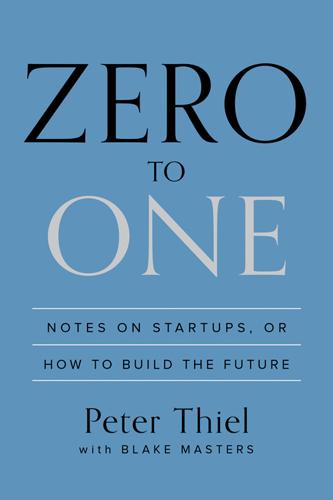
Zero to One: Notes on Startups, or How to Build the Future
by
Peter Thiel
and
Blake Masters
Published 15 Sep 2014
That’s why hiring consultants doesn’t work. Part-time employees don’t work. Even working remotely should be avoided, because misalignment can creep in whenever colleagues aren’t together full-time, in the same place, every day. If you’re deciding whether to bring someone on board, the decision is binary. Ken Kesey was right: you’re either on the bus or off the bus. CASH IS NOT KING For people to be fully committed, they should be properly compensated. Whenever an entrepreneur asks me to invest in his company, I ask him how much he intends to pay himself. A company does better the less it pays the CEO—that’s one of the single clearest patterns I’ve noticed from investing in hundreds of startups.
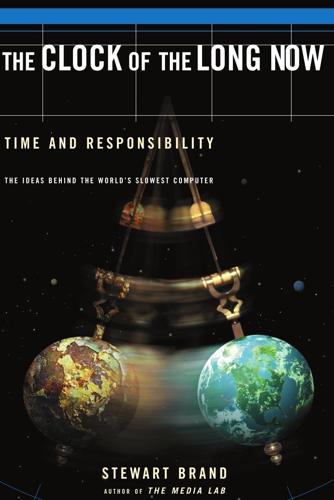
Clock of the Long Now
by
Stewart Brand
Published 1 Jan 1999
The ultimate reason for initiating something ambitious is not to fulfill certain notions but to find out what surprises might emerge. The most remarkable results almost certainly cannot be anticipated. What would the existence of something thought of as a 10,000-Year Library bring into the world? “Boiling rocks” is what the novelist and provocateur Ken Kesey calls this kind of research. “If you don’t boil rocks and drink the water, how do you know it won’t make you drunk?” TRAGIC OPTIMISM Some ideas present themselves to a writer as if they were for a live audience, in the tone and cadence of a speech, even anticipating imaginary questions. This happened to me here.
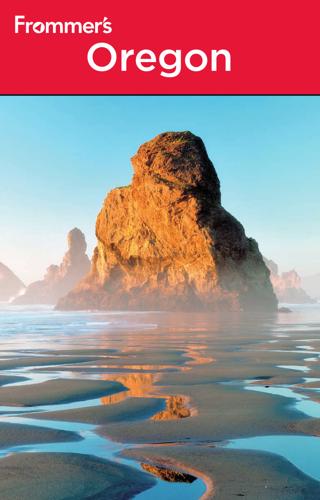
Frommer's Oregon
by
Karl Samson
Published 26 Apr 2010
Among his many books are Oregon, Oregon II, and Oregon III. In his book Voyage of a Summer Sun: Canoeing the Columbia River, Robin Cody writes of his 1,200-mile canoe journey down the Columbia River from its source in the Canadian Rockies. Fiction Oregon has not inspired a great deal of fiction. The best-known work of Oregon fiction is probably Ken Kesey’s Sometimes a Great Notion, which presents an evocative portrayal of a logging family. Kesey also set his novel The Last Go Round among the cowboys and bucking broncos of the Pendleton Round-Up, in 1911. The life of a 19th-century mountain man is the subject of Don Berry’s Trask. Ernest Callenbach’s Ecotopia is a novel of the near future in which the Northwest 05_537718-ch02.indd 22 secedes from the United States to pursue its own environmentally conscious beliefs (unfortunately, much has changed in the Northwest since the idealistic early 1970s, when this novel was written).
…
The town of Astoria, at the mouth of the Columbia River, has been the setting 3/17/10 2:03 PM for several films, including the family cult film The Goonies, Arnold Schwarzenegger’s Kindergarten Cop, and hit children’s movies Free Willy and Free Willy 2. For a while, the orca whale star of the Free Willy films even resided at the Oregon Coast Aquarium. The Ken Kesey classic Sometimes a Great Notion, starring Paul Newman and Henry Fonda, was also shot on the Oregon coast, though in the Newport area rather than in Astoria. Other movies shot in Oregon include One Flew Over The Cuckoo’s Nest, starring Jack Nicholson; The River Wild, starring Meryl Streep; The Hunted, starring Tommy Lee Jones and Benicio Del Toro; Bandits, starring Bruce Willis and Billy Bob Thornton; and Without Limits, a film about Oregon running phenomenon Steve Prefontaine.
…
This last pub is operated by Rogue Brewing in Newport and offers Eugene’s widest selection of house brews. Eugene’s top two rock concert venues are WOW Hall, 291 W. Eighth Ave. (& 541/ 687-2746; www.wowhall.org), the former Woodmen of the World Hall, and McDonald Theatre, 1010 Willamette St. (& 541/345-4442; www.mcdonaldtheatre.com), a historic downtown theater owned by the family of the late Ken Kesey, a longtime resident of the area. T H E W I L L A M E T T E VA L L E Y With its two theaters and nonstop schedule, the Hult Center for the Performing Arts, One Eugene Center, at Seventh Avenue and Willamette Street (& 541/682-5746 or 682-5000 for tickets; www.hultcenter.org), is the heart and soul of this city’s performingarts scene.
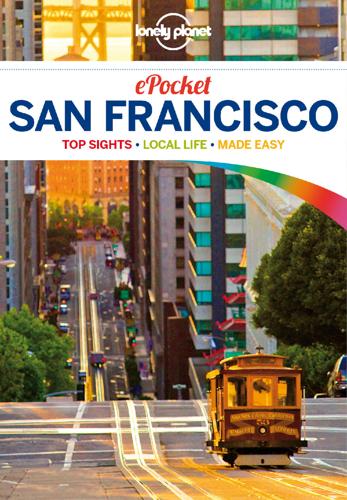
Lonely Planet Pocket San Francisco
by
Lonely Planet
and
Alison Bing
Published 31 Aug 2012
UC Berkeley students organized a disruptive, sing-along sit-in on City Hall steps, and police turned fire hoses on them. Thousands rallied in outrage, and when McCarthy left town in a hurry, it marked the beginning of the end of the repressive McCarthy era. In a pronounced lapse in screening judgment, the CIA hired local writer Ken Kesey to test psychoactive drugs intended to create the ultimate soldier. Instead, they unwittingly inspired Kesey to write the novel One Flew Over the Cuckoo’s Nest, drive psychedelic busloads of Merry Pranksters across country, and introduce San Francisco to LSD and the Grateful Dead. Another LSD tester hired by the CIA, Stewart Brand, proposed an outrageous idea inspired by his LSD experiments: the complex technology governments used could empower ordinary people.
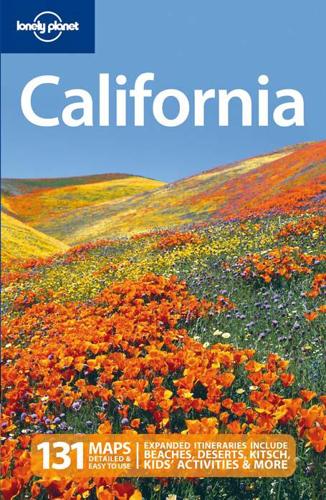
California
by
Sara Benson
Published 15 Oct 2010
* * * Dogtown and Z-Boys (2001) is the counterculture classic documentary tracking the Santa Monica teens who inveunted freestyle skateboarding when they skated in dry LA pools during the late-1970s drought. * * * When the CIA made the mistake of using writer and willing test subject Ken Kesey to test psychoactive drugs intended to create the ultimate soldier, it inadvertently kicked off the psychedelic era. At the January 14, 1967 Human Be-In in Golden Gate Park, trip-master Timothy Leary urged a crowd of 20,000 hippies to dream a new American dream and ‘turn on, tune in, drop out.’ For the duration of the Summer of Love – weeks, months, even a year, depending on who you talk to and how stoned they were at the time – San Francisco was the place where it seemed possible to make love, not war.
…
Skewing the curve is bookish San Francisco, with more writers, playwrights and book purchases per capita than any other US city. You’ve probably already read books by Californians without knowing it, since some of the best-known books by resident authors aren’t set in their home state. Take for example Ray Bradbury’s 1950s dystopian classic Fahrenheit 451; Alice Walker’s Pulitzer Prize–winning The Color Purple; Ken Kesey’s quintessential ’60s novel One Flew Over the Cuckoo’s Nest; Isabel Allende’s best-selling House of the Spirits; and Michael Chabon’s Pulitzer Prize–winning The Amazing Adventures of Kavalier and Clay. For a memorable romp through California with contemporary authors from Pico Iyer to Michael Chabon, check out My California: Journeys by Great Writers (2004) – proceeds support the California Arts Council.
…
Woman Warrior: Memoirs of a Girlhood Among Ghosts (Maxine Hong Kingston) A memoir of growing up Chinese American in Stockton, reflecting the shattered mirror of Californian identity. Slouching Towards Bethlehem (Joan Didion) These 1968 essays burn through the hippie haze to reveal glassy-eyed teenage revolutionaries adrift in the summer of love. The Electric Kool-Aid Acid Test (Tom Wolfe) Follow Ken Kesey, the Merry Pranksters, the Grateful Dead and Hell’s Angels as they tune in, turn on and drop out. The Man in the High Castle (Philip K Dick) The bestselling Berkeley sci-fi writer presents the ultimate what-if scenario: imagine San Francisco circa 1962 if Japan and Nazi Germany had won WWII. Martin Eden (Jack London) Semiautobiographical account of San Francisco’s first literary star, who got by on his wits in the illicit oyster trade.
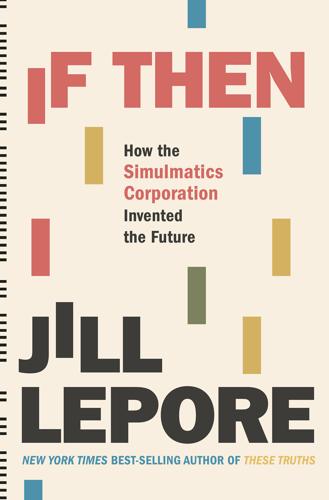
If Then: How Simulmatics Corporation Invented the Future
by
Jill Lepore
Published 14 Sep 2020
Bellevue Hospital, which started out as an almshouse, had a long-standing relationship with Columbia. It made sense that Minnow sent him there, and not someplace else. But its psychiatric ward was dire, bleak, and brutal, its inmates forlorn and broken and abandoned. It was the age of electric shock and lobotomies. Ken Kesey wrote One Flew over the Cuckoo’s Nest in 1959, a story set in a different hospital but bearing witness to the same horrors. Minnow hadn’t shot her husband. But, in commiting him to Bellevue, she hadn’t done nothing, either. Of the Simulmatics Corporation’s many birthplaces—Madison Avenue, Palo Alto, the Pentagon, IBM—the bleakest was the psychiatric ward of Bellevue Hospital, with its white walls and linoleum floors and locked doors, smelling of antiseptic and urine, amid the mutterings of misery and screams of pain and cries of anguish and peals of deranged laughter and the quieter sounds of weeping.
…
“If man is to continue as a successful pattern-complex function in universal evolution,” Fuller wrote in 1960, “it will be because the next decades will have witnessed the artist-scientist’s spontaneous seizure of the prime design responsibility and his successful conversion of the total capability of tool-augmented man from killingry to advanced livingry.” For Stewart Brand, an LSD advocate and one of Ken Kesey’s Merry Pranksters, the commune answered the atomization of Cold War America. But communal living required tools, a taking back of the machine. In 1968, from his base in Menlo Park, California, Brand launched the Whole Earth Catalog, with the motto “access to tools.” (“The insights of Buckminster Fuller are what initiated this catalog,” Brand wrote in its inaugural issue.)40 In 1972, when ARPANET made its debut, Brand celebrated the liberation of the computer from big business.

Fodor's Oregon
by
Fodor's Travel Guides
Published 13 Jun 2023
With a suspense-filled storyline and unforgettable characters, author Lindsay Faye explores themes such as feminism, gender identity, and the rise of the KKK in the state, providing a window into an oft-overlooked aspect of Oregon history. SOMETIMES A GREAT NOTION Although renowned Oregon native son Ken Kesey is more famous for One Flew Over the Cuckoo’s Nest, this second novel—also a movie—with its rich depiction of the travails of an Oregon logging family, is even better and provides rich insight into the region’s personality and history. WILD Cheryl Strayed’s 2012 memoir about discovering herself while hiking the Pacific Crest Trail inspired the 2014 Reese Witherspoon film of the same name.
…
HOregon State Hospital Museum of Mental Health OTHER MUSEUM | On the campus of Oregon’s oldest psychiatric hospital, this nonprofit, volunteer-run museum explores the somber history of psychiatry through artifacts such as straitjackets sewn by patients and now-regrettable treatment devices.The hospital served as the primary set for the legendary 1975 blockbuster One Flew Over the Cuckoo’s Nest, starring Jack Nicholson (which was based on a book by the same name by Oregon author Ken Kesey). A popular permanent exhibit is dedicated to the Academy Award-winning film. E 2600 Center St. NE, Salem P 971/599–1674 w oshmuseum.org A $7 C Closed Mon.–Wed. Silver Falls State Park STATE/PROVINCIAL PARK | Hidden amid old-growth Douglas firs in the foothills of the Cascades, this is the largest state park in Oregon (8,700 acres).
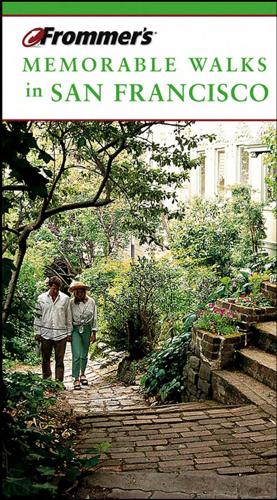
Frommer's Memorable Walks in San Francisco
by
Erika Lenkert
Published 15 Mar 2003
Their free-form improvisation was one of the primary expressions of the hippies’ “do your own thing” principle. Until 1995, you could still experience something of that scene by attending a concert by The Grateful Dead, the quintessential psychedelic rock band. Beneath the tie-dyed shirts and blissful smiles were a set of musical values that dated back to the days of Ken Kesey and his Merry Pranksters, a no-holdsbarred tradition of spontaneous improvisation even at the expense of clarity. The city was deeply saddened in August 1995 by the death of the band’s leader, Jerry Garcia, one of San Francisco’s cultural icons. Jerry played in a number of Bay Area bands before founding the Dead in 1965; but it was with the Dead that he gained real recognition and 13.
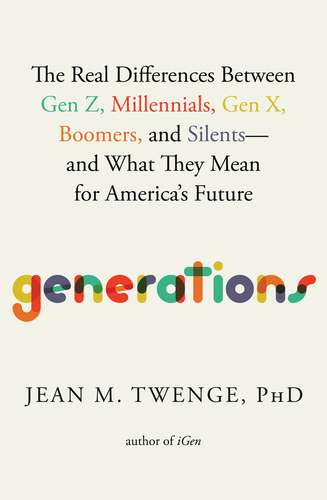
Generations: The Real Differences Between Gen Z, Millennials, Gen X, Boomers, and Silents—and What They Mean for America's Future
by
Jean M. Twenge
Published 25 Apr 2023
Kennedy (1925) Cesar Chavez (1927) Walter Mondale (1928) Martin Luther King Jr. (1929) Sandra Day O’Connor (1930) Ted Kennedy (1932) Diane Feinstein (1933) Ruth Bader Ginsburg (1933) Gloria Steinem (1934) Ralph Nader (1934) Geraldine Ferraro (1935) John McCain (1936) Antonin Scalia (1936) Madeleine Albright (1937) Colin Powell (1937) Nancy Pelosi (1940) Dick Cheney (1941) Jesse Jackson (1941) Bernie Sanders (1941) Joe Biden (1942) Mitch McConnell (1942) John Kerry (1943) Angela Davis (1944) Athletes and Sports Figures Arnold Palmer (1929) Mickey Mantle (1931) Roberto Clemente (1934) Wilt Chamberlain (1936) Jack Nicklaus (1940) Muhammad Ali (1942) Arthur Ashe (1943) Joe Namath (1943) Billie Jean King (1943) Journalists, Authors, and People in the News Harper Lee (1926) Hugh Hefner (1926) Erma Bombeck (1927) Maya Angelou (1928) Barbara Walters (1929) Neil Armstrong (1930) Tom Wolfe (1930) Toni Morrison (1931) Dan Rather (1931) Susan Sontag (1933) Philip Roth (1933) Joan Didion (1934) Charles Kuralt (1934) Carl Sagan (1934) Phil Donahue (1935) Ken Kesey (1935) Judy Blume (1938) Peter Jennings (1938) Joyce Carol Oates (1938) Jerry Rubin (1938) Jacqueline Kennedy Onassis (1939) Tom Brokaw (1940) Anthony Fauci (1940) Sue Grafton (1940) Ted Koppel (1940) Ed Bradley (1941) Nora Ephron (1941) Martha Stewart (1941) Michael Crichton (1942) Erica Jong (1942) John Irving (1942) Bob Woodward (1943) Carl Bernstein (1944) The Equality Revolution Trait: Pioneers in Civil Rights Imagine hopping into a time machine and stopping at two different times, just seven years apart: 1963 and 1970.
…
The 1964 genesis of the Berkeley Free Speech Movement, where students at the University of California demonstrated for the right to fund-raise on campus on behalf of the civil rights movement, was led by Mario Savio (b. 1942). Other prominent figures of the ’60s counterculture were also Silents, like antiwar activists Abbie Hoffman (b. 1936) and Jerry Rubin (b. 1938), “acid test” promoter Ken Kesey (b. 1935), and feminist Gloria Steinem (b. 1934). Muhammad Ali (b. 1942), who gained fame not just for his boxing but for his opposition to the Vietnam War, was a Silent. The musicians most associated with hippie culture were mostly Silents, like Jimi Hendrix (b. 1942) and Janis Joplin (b. 1943).
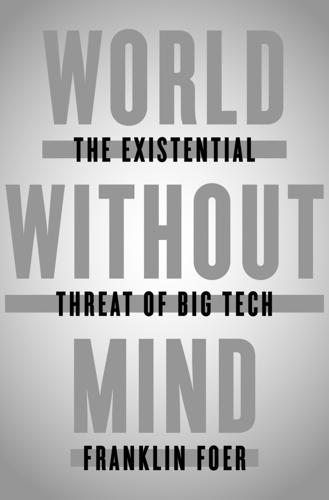
World Without Mind: The Existential Threat of Big Tech
by
Franklin Foer
Published 31 Aug 2017
These skills never did fail him, even after he placed tabs of LSD on his tongue. (He began messing around with acid in 1962, when it could be procured from legitimate medical experimenters.) Brand was the master of the uptight, straitlaced tasks that flummoxed most of his long-haired friends—renting a hall, publicizing an event. When he linked up with the writer Ken Kesey and his storied posse of drug-dabbling Merry Pranksters, he represented the “restrained, reflective wing” of that Day-Glo band of hipsters, at least in The Electric Kool-Aid Acid Test, Tom Wolfe’s travelogue through the emerging counterculture. Though Brand wore a top hat with a flower, and he spoke in impish aphorisms, he remained a neatnik with a filing cabinet.
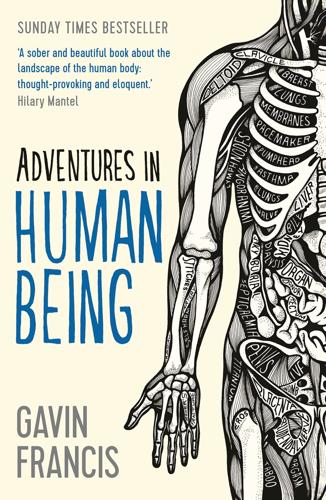
Adventures in Human Being (Wellcome)
by
Gavin Francis
Published 28 Apr 2015
The psychiatrists of SEAN don’t want it hidden away, stigmatised and cloaked in mystery – they’ve opened their work to public scrutiny in a way that other medical specialties would do well to emulate. The reputation of the treatment in the popular imagination has been darkened by literature: in Ken Kesey’s One Flew Over The Cuckoo’s Nest, it’s an instrument of torture, while for Sylvia Plath in The Bell Jar it’s alternately terrifying and transcendental – terrifying when administered by an uncaring doctor, and transcendental when delivered by someone more compassionate. For Plath, ECT is both sacred and profane, punishment and cure – for her fictional protagonist in The Bell Jar, it seems to have the power of both damnation and redemption.3 It’s notable that in many of the deeply negative accounts of ECT in literature, the recipient wasn’t sedated and anaesthetised for the treatment – modern patient experience is for most people far more benign.
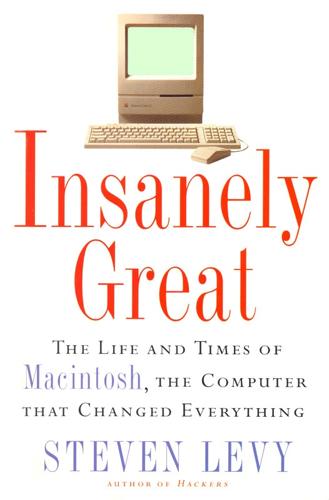
Insanely Great: The Life and Times of Macintosh, the Computer That Changed Everything
by
Steven Levy
Published 2 Feb 1994
It's a book', and not throw up at the idea of reading on a screen. We also wanted to keep intact a book's functionality. We couldn't provide the fetishistic relationship to the object, and didn't want readers to lose too much, or they wouldn't like it." As Stein admitted, the experience of reading Dickens or Ken Kesey on a PowerBook could not provide the tactile intimacy of ink on bound paper. But as with other successful software metaphors, these virtual books could outperform their traditional counterparts in other ways. Since the text of the book was stored as an electronic document, the reader could interact with it as if it were a word-processing document.
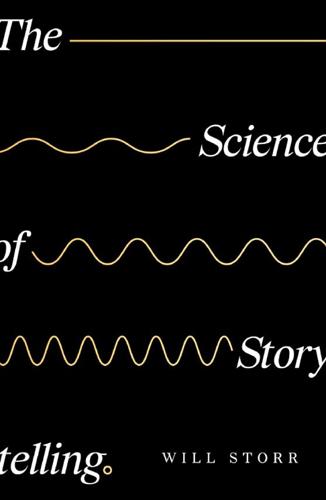
The Science of Storytelling: Why Stories Make Us Human, and How to Tell Them Better
by
Will Storr
Published 3 Apr 2019
His internal model of the world has been recognised as wrong and the reader is left in the lovely glow of the implication that his ability to control the external world will be improved and, as a result, he’ll receive the golden treasure of transformation. The ending of his story is a happy one. An archetypal happy ending can be found in the closing paragraphs of Ken Kesey’s One Flew Over the Cuckoo’s Nest. Set in a psychiatric institution in 1950s, the novel is narrated by the native American patient Chief Bromden, whose model of the world is, like Mr B’s, pathologically delusional. When we meet him, he believes reality itself is controlled by a strange hidden mechanism he calls the Combine.
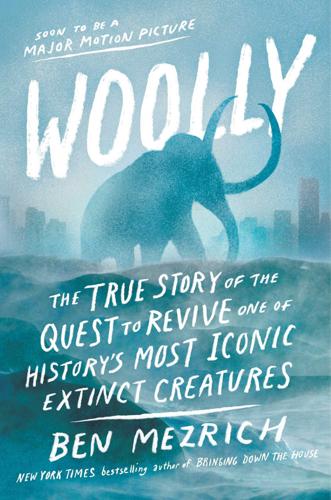
Woolly: The True Story of the Quest to Revive History's Most Iconic Extinct Creature
by
Ben Mezrich
Published 3 Jul 2017
Church could think of no better description of Brand and Phelan. In the late sixties, as the creator and publisher of the Whole Earth Catalogue, Brand had become a guide for those looking to live in harmony with the environment. He had blazed a countercultural trail that had inspired Church’s entire generation. One of Ken Kesey’s original Merry Pranksters, who were written about by Tom Wolfe in his book The Electric Kool-Aid Acid Test, Brand had been a proponent of the use of LSD—the “turn on, tune in, drop out” movement. In fact, the Whole Earth Catalogue had actually grown out of an acid trip. After a particularly lucid experience in 1968, Brand had decided to sell buttons inquiring, “Why haven’t we seen a picture of the whole Earth yet?”
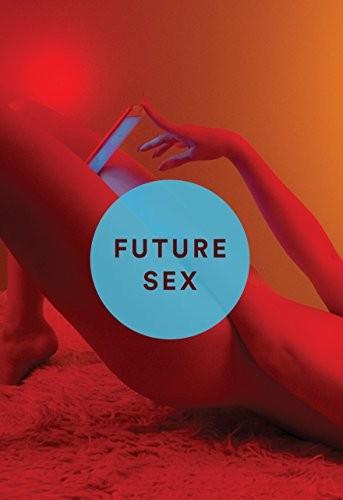
Future Sex
by
Emily Witt
Published 10 Oct 2016
Via public transportation, it took something like two hours to get to Facebook, riding first the BART and then switching to the top deck of a clanging red double-decker CalTrain that vented hot air as it rolled prehistorically along El Camino Real. On a city bus from the train station toward Facebook HQ, the bus stopped at a Veterans’ Hospital—the same Menlo Park Veterans’ Hospital, I presumed, where Ken Kesey had taken LSD for the first time. It seemed impossible that anything of cultural import had fermented in such a wasteland but it was here, and within a few miles of here, that it had all happened: the People’s Computer Company, the creative writing grad students taking acid on Perry Lane, the offices of the Whole Earth Catalog, all of it as impossible to transplant to the Menlo Park of now as it was to overlay the memory of a down-and-out folk scene over the Chipotles and Juice Generations in Greenwich Village.
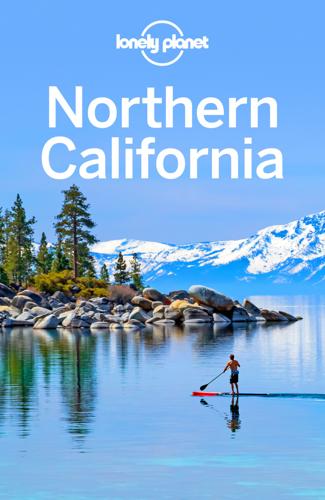
Northern California Travel Guide
by
Lonely Planet
During WWII, soldiers accused of insubordination and homosexuality were dismissed in San Francisco, as though that would teach them a lesson. Instead San Francisco’s counterculture thrived, with North Beach jazz and Beat poetry. When the Central Intelligence Agency (CIA) tested LSD on the willing volunteer and One Flew Over the Cuckoo’s Nest author Ken Kesey, he slipped some into Kool-Aid and kicked off the psychedelic ’60s. The Summer of Love brought free food, love and music to the Haight, and pioneering gay activists in the Castro helped elect Harvey Milk as San Francisco supervisor – America’s first out gay official. When San Francisco witnessed devastating losses from HIV/AIDS in the 1980s, the city rallied to become a global model for epidemic treatment and prevention.
…
A mile in from San Gregorio State Beach ( GOOGLE MAP ; %650-726-8819; www.parks.ca.gov; Hwy 1, San Gregorio; per car $8; h8am-sunset) on Hwy 1, kick off your shoes and stomp your feet to live bluegrass, Celtic and folk music on the weekends at the San Gregorio General Store ( GOOGLE MAP ; %650-726-0565; www.sangregoriostore.com; 7615 Stage Rd, San Gregorio; hstore 10:30am-6pm Sun-Thu, to 7pm Fri, 10am-7pm Sat, to 6pm Sun). Check out the wooden bar singed by area branding irons. Eight miles further east is the tiny township of La Honda, former home to One Flew Over the Cuckoo’s Nest author Ken Kesey and the launching spot for his 1964 psychedelic bus trip immortalized in Tom Wolfe’s The Electric Kool-Aid Acid Test. Housed in a 19th-century blacksmith’s shop, Apple Jack’s ( GOOGLE MAP ; %650-747-0331; 8790 Hwy 84, La Honda; hnoon-2am) is a rustic, down-home country-and-western bar with motorcycles lined up in a row outside.
…
San Francisco was home to free speech and free spirits, and soon everyone who was anyone was getting arrested: Beat poet Lawrence Ferlinghetti for publishing Allen Ginsberg’s epic poem Howl, comedian Lenny Bruce for uttering the F-word onstage, and Carol Doda for becoming the first stripper to go topless. When the CIA made the mistake of using writer and willing test subject Ken Kesey to test psychoactive drugs intended to create the ultimate soldier, it inadvertently kicked off the psychedelic era. At the January 14, 1967 Human Be-In at Golden Gate Park, trip-master Timothy Leary urged a crowd of 20,000 hippies to dream a new American dream and ‘turn on, tune in, drop out.’ When Flower Power faded, other Bay Area rebellions grew in its place: Black Power, Gay Pride and medical marijuana clubs.
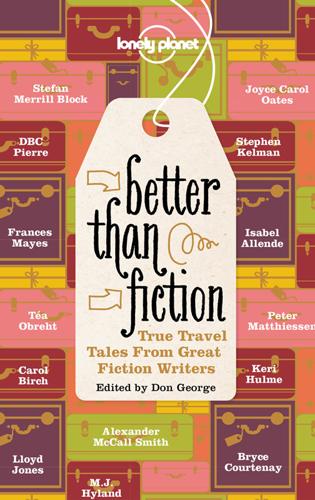
Better Than Fiction
by
Lonely Planet
My family’s annual vacations had always consisted of weeks-long summer driving trips, and almost exclusively north, to cool, tidy, familiar Minnesotas and Wisconsins and Manitobas. I had studied Spanish for ten years. I was 17 going on 18, out of high school a semester early, working a minimum-wage job and admitted to the college of my choice. And for three years my favorite book had been The Electric Kool-Aid Acid Test, Tom Wolfe’s iconifying 1968 chronicle of Ken Kesey and his dozen friends’ pointless and profound coast-to-coast-to-coast 1964 trip across America in an old school bus. It was a moment, for people my age, when high adventure seemed not only possible but easy, not only easy but obligatory. And so in the summer of 1972, five other Omaha boys and I bought a stubby old yellow school bus.

USA Travel Guide
by
Lonely, Planet
San Francisco became a testing ground for civil rights and free speech, with Beat poet Lawrence Ferlinghetti and City Lights Bookstore winning a landmark 1957 ruling against book banning over the publication of Allen Ginsberg’s splendid, incendiary Howl and Other Poems . The Central Intelligence Agency (CIA) hoped an experimental drug called LSD might turn San Francisco test subject Ken Kesey into the ultimate fighting machine, but instead the author of One Flew Over the Cuckoo’s Nest slipped some into Kool-Aid and kicked off the psychedelic ’60s. The Summer of Love meant free food, love and music in the Haight until the ’70s, when enterprising gay hippies founded an out-and-proud community in the Castro.
…
OREGON FACTS » Nickname Beaver State » Population 3,831,074 » Area 95,997 sq miles » Capital city Salem (population 154,637) » Other cities Portland (population 583,776), Eugene (population 156,185), Bend (population 76,639) » Sales tax Oregon has no sales tax » Birthplace of former US president Herbert Hoover (1874–1964), writer and Merry Prankster Ken Kesey (1935–2001), actress and dancer Ginger Rogers (1911–95), The Simpsons creator Matt Groening (b 1954), filmmaker Gus Van Sant (b 1952) » Home of Oregon Shakespeare Festival, tree-sitting, Nike, McMenamins » Politics Democratic governor, Democrat majorities in Congress, Democrat in Presidential elections since 1984 » Famous for the Oregon Trail, forests, rain, beer, not being able to pump your own gas » State beverage milk (dairy’s big here) » Driving distances Portland to Eugene 110 miles, Pendleton to Astoria 295 miles Portland If you want to see what the future looks like, come to Portland, Oregon, a city that is 10 years ahead of its time and as definitive of its age as the Rome of Caesar or the Paris of Haussmann.
…
While the downtown’s no oil painting, Eugene wins kudos for its academic institution, the magnificently landscaped University of Oregon, which also doubles up as an arboretum. Elsewhere Eugene is an underneath-the-surface kind of place where some gentle prodding reveals running trails, workers coops and the odd aging Merry Prankster. The Prankster’s original psychedelic bus, Further, remains at the farm of former Eugene resident Ken Kesey in Pleasant Hill, 10 miles away. Sights & Activities As the city that gave the world Nike, Eugene (or ‘Tracktown’ as it likes to call itself) safeguards some of the best running facilities in the nation. Many trails hug the Willamette River and some are floodlit after dark. Alton Barker Park PARK Eugene’s largest park is renowned for its running trails, most notably the wood-chip Pre’s Trail named for Eugene’s Olympian running icon Steve Prefontaine, who was killed in a car crash in 1975.
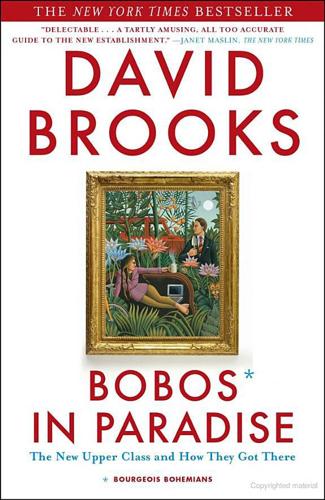
Bobos in Paradise: The New Upper Class and How They Got There
by
David Brooks
Published 1 Jan 2000
Gone is the old emphasis on scientific analysis and narrow specialization. Gone are Robert McNamara–style rationalists with their sharp white shirts. Now messy desks are admired, along with the tousle-haired geniuses who sit behind them. Companies hire hyperkinetic motivators to serve as in-house Ken Keseys and inspirational Merry Pranksters. Gordon MacKenzie is an aging hippie who wears bright tie-dyed shirts and blue jeans and goes from corporation to corporation exhorting them to “orbit the giant hairball.” The hairball in his lexicon is the bureaucracy, and to orbit it is to spin out into an individualized realm of creative vibrancy.
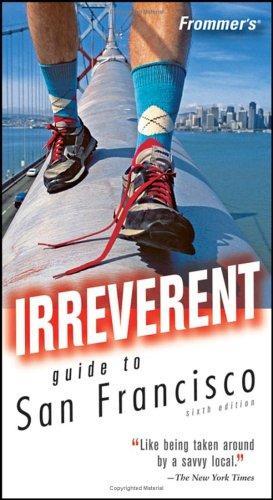
Frommer's Irreverent Guide to San Francisco
by
Matthew Richard Poole
Published 17 Mar 2006
Just a few years later, the city was the center of a cultural convulsion of a more Day-Glo shade. By the time the infamous Summer of Love rolled around in 1967, San Francisco’s psychedelic scene had actually been in full swing for more than two years, since 111 DIVERSIONS One Flew Over the Cuckoo’s Nest author Ken Kesey introduced Owsley acid (known as the “Cadillac of LSD”) to the Grateful Dead, and acid rock was born. Another acidpowered band, the Jefferson Airplane, first played at a club called the Matrix, 3138 Fillmore St., near Union St., in August 1965, but the club got too loud for the neighbors, so the acidheads moved on and it evolved into a rowdy singles bar still doing business as Pierce Street Annex.
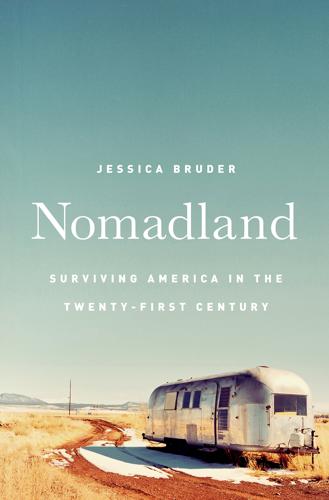
Nomadland: Surviving America in the Twenty-First Century
by
Jessica Bruder
Published 18 Sep 2017
A few are still as yellow as a number-two pencil, while others are airbrushed with wilderness scenes or psychedelic swirls. Some have been converted into elaborate homes with couches and woodstoves. A handful are live-in businesses, including the Bus Stop Ice Cream & Coffee Shop—a rainbow-colored throwback that looks like it could belong to a latter-day Ken Kesey whose drug of choice is espresso—and a blacksmith’s studio with an anvil logo and the slogan “Recycling Society’s Waste by Hammer & Hand.” There are also rattletrap pickups with cabins built into their cargo beds, fancy fifth-wheel RVs with satellite dishes, and jalopies so overburdened with possessions that their chassis scrape the asphalt.
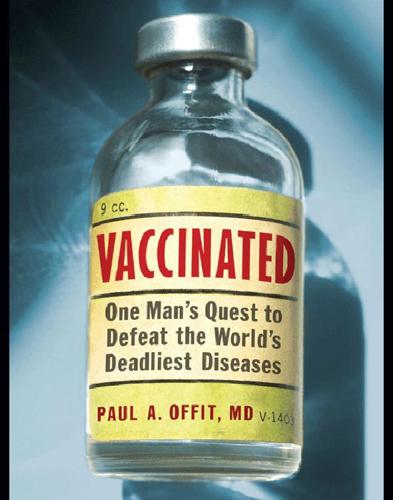
Vaccinated: One Man's Quest to Defeat the World's Deadliest Diseases
by
Paul A. Offit
Published 1 Jan 2007
Finally, in 1949 the committee awarded the prize to Egas Moniz of Portugal for discovering the value of lobotomy—the removal of a lobe of the brain—in treating certain psychoses. In the middle of the twentieth century, lobotomies were popular. Doctors performed a lobotomy on John F. Kennedy’s sister Rosemary; Ken Kesey had one performed on the fictional Randle P. McMurphy in his book One Flew over the Cuckoo’s Nest (Jack Nicholson played McMurphy in the 1975 movie); and the New England Journal of Medicine hailed this therapy as the birth of “a new psychiatry.” But the procedure proved worthless and cruel. Maurice Hilleman receives the National Medal of Science from President Ronald Reagan, 1988.
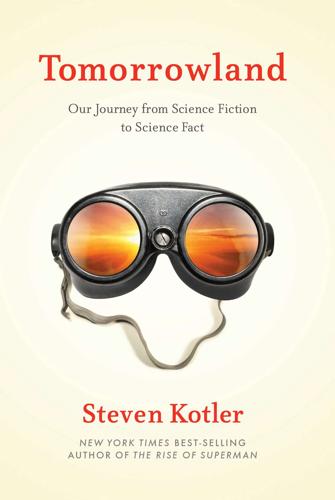
Tomorrowland: Our Journey From Science Fiction to Science Fact
by
Steven Kotler
Published 11 May 2015
Most date the start of that burial to 1960, when Harvard psychologist Timothy Leary traveled to Mexico to try magic mushrooms for the first time, later saying he learned more about the brain “in the five hours after taking these mushrooms . . . than . . . in the preceding fifteen years of doing research in psychology.” Over the next few years, Leary began conducting research on psychedelics, first at Harvard and, after he was thrown out, at an estate on the East Coast. Along the way, he dosed hundreds, maybe thousands, including Ken Kesey and the rest of the Merry Pranksters. The fire that was the sixties had been lit — which is what most remember from this period. But psychedelic research didn’t go away. By the time that party was over — LSD was banned in 1968, psilocybin soon after, though most point to the 1970 Controlled Substance Act (and the resulting exportation of US drug policy to the rest of the world) as the real end — there had been dozens of books written, six major conferences, and more than 1,000 papers published about research conducted on over 40,000 patients.
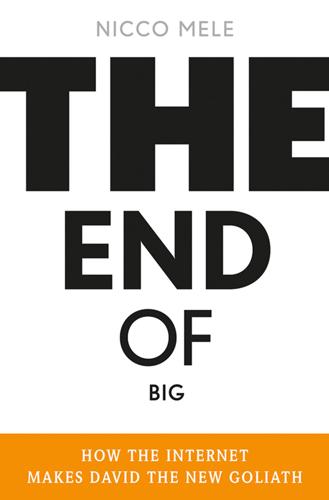
The End of Big: How the Internet Makes David the New Goliath
by
Nicco Mele
Published 14 Apr 2013
They called their protest Smash ILLIAC IV and included a cartoon of the mainframe computer with screens tracking things like a “kill-die factor” and a gaping mouth labeled “Feed $$$$$$ here!” 12. Stewart Brand is a particularly interesting figure because he bridged these two branches of nerd culture. He was the camera operator at Engelbart’s “Mother of All Demos,” but he was also one of the Merry Pranksters running around on Ken Kesey’s bus. The quotation is taken from his essay “We Owe It All to the Hippies,” Time, 1 Mar. 1995. 13. http://www.digibarn.com/collections/newsletters/peoples-computer/peoples-1972-oct/index.html 14. http://www.atariarchives.org/deli/homebrew_and_how_the_apple.php 15. http://www.digibarn.com/collections/newsletters/homebrew/V2_01/index.html 16. http://www.gadgetspage.com/comps-peripheral/apple-i-computer-ad.html 17.
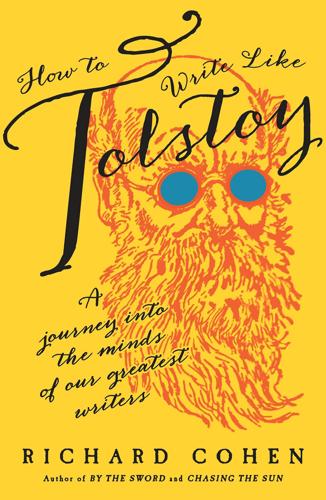
How to Write Like Tolstoy: A Journey Into the Minds of Our Greatest Writers
by
Richard Cohen
Published 16 May 2016
Thus it may serve for the narrator to be tellingly biased like Saleem; impaired like Benjy in The Sound and the Fury or the fifteen-year-old autistic narrator of The Curious Incident of the Dog in the Night-Time; insane (the governess who narrates Henry James’s The Turn of the Screw);*4 a congenital liar (such as Thomas Fowler, the cynical journalist in The Quiet American); or plain stupid (Jonathan Swift’s Gulliver). In Julian Barnes’s 2011 Booker-winning The Sense of an Ending, the unreliable narrator is a mystery to himself, making the novel a puzzle to solve. Saleem is not the only narrator in classic fiction to manipulate his memories, intentionally or otherwise: Ken Kesey tries something similar in One Flew over the Cuckoo’s Nest. Kesey, who polished his prose style as a young member of the Stanford creative writing program of 1946, noted (while imputing to himself an undeserved originality) that: The book I have been doing…is a third-person work but something was lacking; I was not free to impose my perception and bizarre eye on the god-author who is supposed to be viewing the scene, so I tried something that will be extremely difficult to pull off, and, to my knowledge, has never been tried before—the narrator is going to be a character.

Lab Rats: How Silicon Valley Made Work Miserable for the Rest of Us
by
Dan Lyons
Published 22 Oct 2018
Wozniak and his Apple co-founder Steve Jobs were long-haired hippie-hackers who built their first personal computers as members of the Homebrew Computer Club, a pack of amateur kit-computer hobbyists. Wozniak was steeped in the people-first “HP Way.” Jobs was an LSD-taking, commune-dwelling hippie who often went barefoot and who was influenced by Stewart Brand, a proponent of psychedelic drugs who hung out with Ken Kesey and the Merry Pranksters. Brand created the Whole Earth Catalog and co-founded the WELL, one of the first online communities. Its members included John Perry Barlow, who wrote lyrics for the Grateful Dead and co-founded the Electronic Frontier Foundation, an Internet civil liberties advocacy organization.
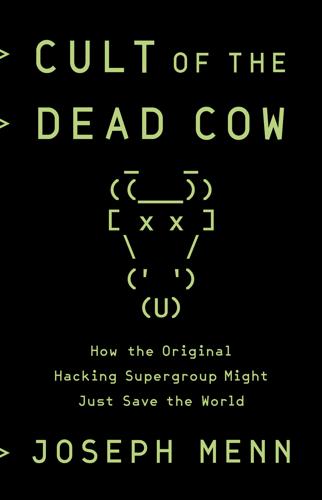
Cult of the Dead Cow: How the Original Hacking Supergroup Might Just Save the World
by
Joseph Menn
Published 3 Jun 2019
Grateful Dead guitarist Jerry Garcia personally approved Dryden’s joining Airplane, and members of both bands and their mutual friends lived together in Haight-Ashbury and other San Francisco neighborhoods. Along with shared creative efforts and antiestablishment attitude, that deep alliance meant experimental social structure, early technological adoption, and, as Mann put it, “better living through chemistry.” Even before the Dead had their name, they were a part of Ken Kesey’s Merry Pranksters, the eclectic and idealistic group that drove through America to have fun messing with people and to spread the good news about LSD. Another Prankster, visionary writer and marketer Stewart Brand, would also help spread the good news about the coming age of computing. Brand’s outlets included the ecology-oriented magazine Whole Earth Catalog and the WELL, the pioneering West Coast online community.

Artificial Unintelligence: How Computers Misunderstand the World
by
Meredith Broussard
Published 19 Apr 2018
Doug Engelbart, the NASA- and ARPA-funded researcher who performed the 1968 “mother of all demos” that showed for the first time all the hardware and software elements of modern computing, dropped acid at the International Foundation for Advanced Study, the legal home for academic inquiry into LSD that lasted until 1967. Operating the camera for Engelbart’s demo was Stewart Brand, the Whole Earth Catalog founder who helped organize LSD guru Ken Kesey’s infamous acid tests, massive drug-fueled cross-country bacchanals that were chronicled in Tom Wolfe’s book The Electric Kool-Aid Acid Test. Brand was the most important connector between Minsky’s world of scientists and the counterculture. “We are as gods and might as well get good at it,” Brand wrote as the first line of the Whole Earth Catalog in 1968.16 That publication was a major source of inspiration for almost all the early Internet pioneers, from Steve Jobs to tech-publishing titan Tim O’Reilly.
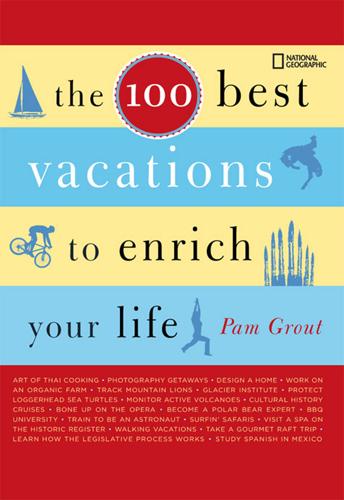
The 100 Best Vacations to Enrich Your Life
by
Pam Grout
Published 14 May 2007
King: When he was born, Wavy’s parents named him Hugh Romney. But, while doing a comedy show for B. B. King in 1969, it was the King of Blues himself who bequeathed Wavy the nickname he still uses today. Tom Wolfe: Wavy provided the name for Wolfe’s first novel, The Electric Kool-Aid Acid Test, about the psychedelic sixties. While traveling with Ken Kesey’s Merry Pranksters, Wavy started calling LSD “electric kool-aid,” and Wolfe, who was also traveling with the Pranksters, figured it was the perfect name for his book. Everyone at Woodstock: It was Wavy who got up on the Woodstock stage in 1969 and famously announced: “What we have in mind is breakfast in bed for 400,000
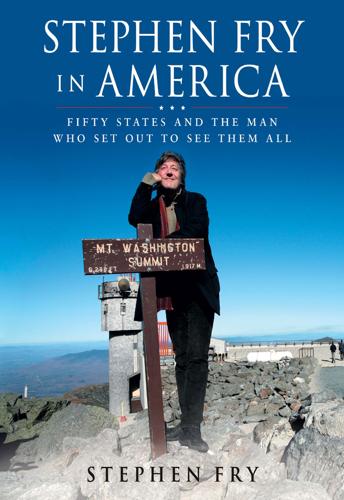
Stephen Fry in America
by
Stephen Fry
Published 1 Jan 2008
* * * COLORADO KEY FACTS Abbreviation: CO Nickname: The Centennial State Capital: Denver Flower: Rocky Mountain columbine Tree: Colorado blue spruce Bird: Lark bunting Mineral: Rhodochrosite Motto: Nil Sine Numine (‘Nothing Without Providence’) Well-known residents and natives: John Kerry, Horace ‘Go West Young Man’ Greeley, James Michener, Allen Ginsberg, Clive Cussler, Antoinette ‘Tony Award’ Perry, Ken Kesey, Douglas Fairbanks, Lon Chaney, Bill Murray, Roseanne Barr, Tim Allen, Don Cheadle, Trey Parker, Matt Stone, Paul Whiteman, Glenn Miller, John Denver. * * * Stephens don’t ski. Aspen I defy any human not to be astounded and enchanted by a drive like the one I now take, from Fort Collins to Aspen.
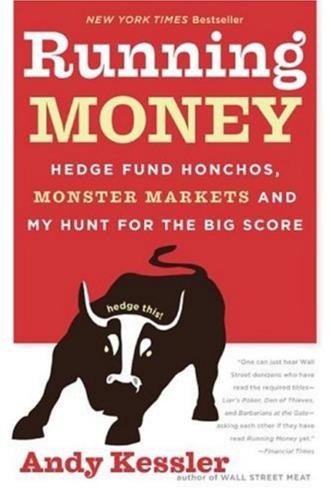
Running Money
by
Andy Kessler
Published 4 Jun 2007
He seems like a nice old man who lives next door,” I said. “No, you don’t understand. He is the reason we are all here. He is the reason this Valley exists. He saw it all first. In the ’60s.” “Was he hallucinating?” “What do you mean?” “Well, that VA hospital half a mile from here, at Willow and 101, is where Ken Kesey wrote One Flew Over the Cuckoo’s Nest. Something may have spilled in the water.” “Not funny. Especially from you, Mr. Tech Investor.” “What do you mean?” “Everything you use today on your PC, Doug Engelbart demo’ed 30 years ago.” “Like what?” “Like the mouse.” “I thought that was Steve Jobs.” “Nope.”
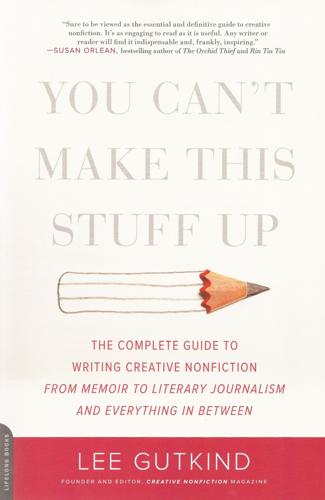
You Can't Make This Stuff Up: The Complete Guide to Writing Creative Nonfiction--From Memoir to Literary Journalism and Everything in Between
by
Lee Gutkind
Published 13 Aug 2012
” - Nasdijj, The Blood Runs Like a River Through My Dreams: the first of three memoirs by a Navajo writer who claims that he “became a writer to piss on all the many white teachers and white editors out there (everywhere) who said it could not be done. Not by the stupid mongrel likes of me.” 20 01 Barbara Ehrenreich, Nickel and Dimed: the Harper’s writer goes undercover as a house cleaner, waitress, and Walmart employee to see how the working poor make ends meet. - Ken Kesey, acclaimed novelist whose psychedelic parties featured prominently in Tom Wolfe’s The Electric Kool-Aid Acid Test and Hunter S. Thompson’s Hell’s Angels, dies at age 66. - Hollywood falls in love with nonfiction: A Beautiful Mind, adapted from Sylvia Nasar’s biography of Nobel laureate John Nash, wins four Academy Awards, including best picture.

This Is Your Country on Drugs: The Secret History of Getting High in America
by
Ryan Grim
Published 7 Jul 2009
A minor player in the coke trade in the seventies, Mexico would a decade later come to rival the Caribbean. By the late nineties, it would dominate the industry. As domestic pot production began to take off in northern California, the quality of homegrown marijuana available to Americans was steadily improving. Ken Kesey’s former girlfriend and the future wife of Jerry Garcia, Carolyn “Mountain Girl” Adams, was among the first to grow gourmet bud in northern California, in the early seventies. Some Vietnam vets who had picked up a taste for drugs while fighting Communists were happy to employ camouflage and booby-trapping skills learned in the Asian jungle in the forests of northern California, and as they followed Adams’s lead, U.S. pot farming was allowed to expand with near impunity.
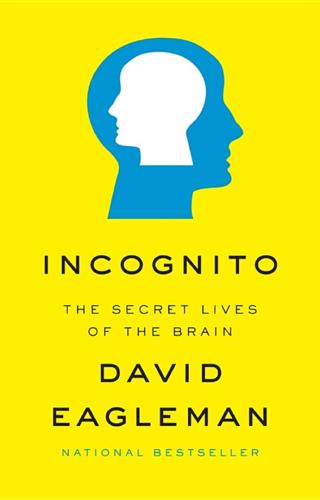
Incognito: The Secret Lives of the Brain
by
David Eagleman
Published 29 May 2011
Moniz’s protégé, Walter Freeman, noticing that institutional care was hampered by a lack of effective treatments, saw the lobotomy as an expedient tool to liberate large populations from treatment and back into private life. Unfortunately, it robbed people of their basic neural rights. This problem was brought to its extreme in Ken Kesey’s novel One Flew Over the Cuckoo’s Nest, in which the rebellious institutionalized patient Randle McMurphy is punished for bucking authority: he becomes the unlucky recipient of a lobotomy. McMurphy’s gleeful personality had unlocked the lives of the other patients in the ward, but the lobotomy turns him into a vegetable.
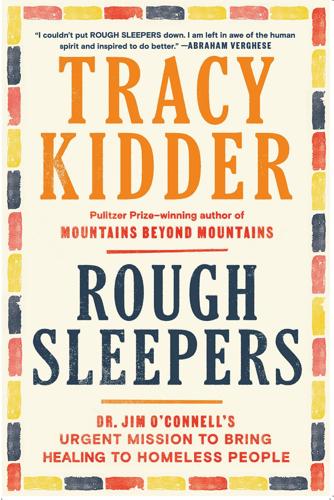
Rough Sleepers: Dr. Jim O'Connell's Urgent Mission to Bring Healing to Homeless People
by
Tracy Kidder
Published 17 Jan 2023
They wanted him to do more lecturing, and to spend time writing and thinking about the big issues surrounding homelessness and medicine. For some time, they’d been gently suggesting that he “step back” from his duties with patients and the Street Team. Jim toyed with that idea. Riding the van on a quiet night, in the dappled semidarkness of the cabin, he said, “I have this vision of like, the old bus of Ken Kesey, and picking up our people and going on trips. You know, to the zoo, to the movies, to the beach, just gather everybody and go, three days a week go and do something.” On another nighttime ride, he offered me a summary of what he felt the Program had become, which was something like a summary of his career.
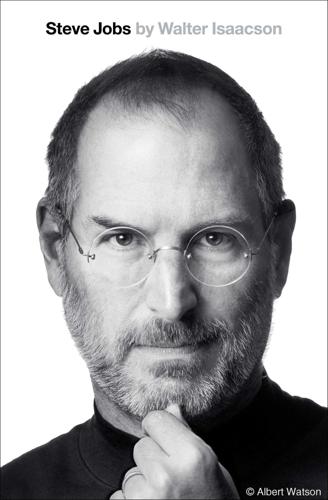
Steve Jobs
by
Walter Isaacson
Published 23 Oct 2011
There was a hacker subculture—filled with wireheads, phreakers, cyberpunks, hobbyists, and just plain geeks—that included engineers who didn’t conform to the HP mold and their kids who weren’t attuned to the wavelengths of the subdivisions. There were quasi-academic groups doing studies on the effects of LSD; participants included Doug Engelbart of the Augmentation Research Center in Palo Alto, who later helped develop the computer mouse and graphical user interfaces, and Ken Kesey, who celebrated the drug with music-and-light shows featuring a house band that became the Grateful Dead. There was the hippie movement, born out of the Bay Area’s beat generation, and the rebellious political activists, born out of the Free Speech Movement at Berkeley. Overlaid on it all were various self-fulfillment movements pursuing paths to personal enlightenment: Zen and Hinduism, meditation and yoga, primal scream and sensory deprivation, Esalen and est.
…
One person who encouraged the denizens of the counterculture to make common cause with the hackers was Stewart Brand. A puckish visionary who generated fun and ideas over many decades, Brand was a participant in one of the early sixties LSD studies in Palo Alto. He joined with his fellow subject Ken Kesey to produce the acid-celebrating Trips Festival, appeared in the opening scene of Tom Wolfe’s The Electric Kool-Aid Acid Test, and worked with Doug Engelbart to create a seminal sound-and-light presentation of new technologies called the Mother of All Demos. “Most of our generation scorned computers as the embodiment of centralized control,” Brand later noted.
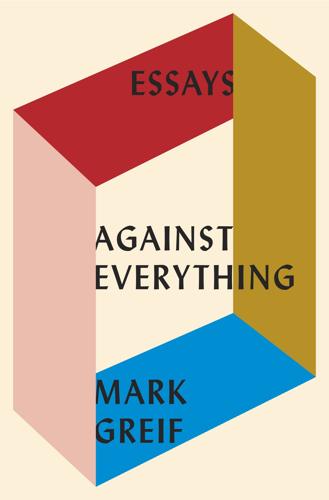
Against Everything: Essays
by
Mark Greif
Published 5 Sep 2016
Not thanks to musical training or style, but based on a new function and new kind of emotion they promised. Both bands in fact started with the same name in 1965: the Warlocks. And both were quickly taken up by other cultural movements and artists from other genres to furnish “house bands” for collective projects. On the West Coast, Ken Kesey hired the Dead to provide music for his LSD parties, the Acid Tests. The Palo Alto Acid Test, the first to involve the general public, took place in November 1965, just before Warhol started staging his events. (Kesey had earlier had the Dead, then still the Warlocks, playing in a Santa Cruz living room with everyone dosed.)
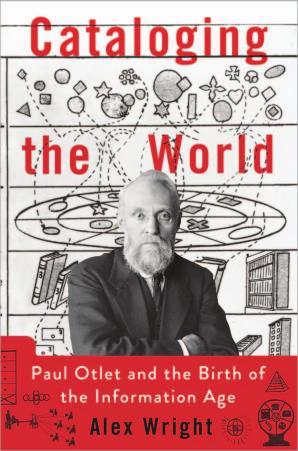
Cataloging the World: Paul Otlet and the Birth of the Information Age
by
Alex Wright
Published 6 Jun 2014
Also in attendance were a few key members of the original NLS team, who migrated over to Xerox’s PARC research division under the direction of Alan Kay, with whom they began developing the first true personal computer, the Alto. Stewart Brand, who was of course there, later brought the novelist and ur–Merry Prankster Ken Kesey over to look at the system; Kesey promptly dubbed it “the next thing after acid.”16 By the early 1970s, a “People’s Computer Center” had appeared in Menlo Park, providing access to rudimentary computer tools that would allow customers to play games or learn to program. In the mid-1970s a young Steve Jobs (another LSD experimenter) first caught a glimpse of the graphical user interface (GUI) at Xerox PARC, soon licensing the software that would shape the subsequent trajectory of the Macintosh operating system and influence the design of the personal computer operating systems that most of us still use. 260 T he I ntergalactic N etwor k The counterculture of the 1960s and 1970s would play a formative role in shaping the personal computer revolution that followed.
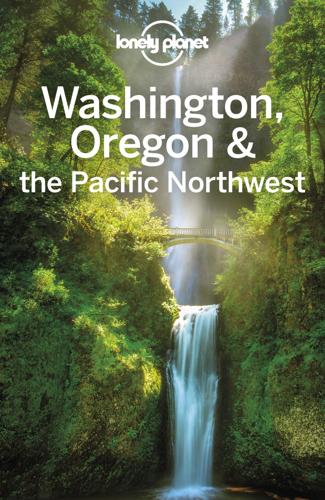
Lonely Planet Washington, Oregon & the Pacific Northwest
by
Lonely Planet
Jon Krakauer is the award-winning author of Into Thin Air (1997) and Under the Banner of Heaven (2003), while Sherman Alexie is a Native American author who adapted his short story This Is What It Means to Say Phoenix, Arizona into the excellent movie Smoke Signals (1998). Timothy Egan, the Pulitzer Prize–winning novelist and journalist, lives in Seattle. Oregon’s biggest literary name is the late Ken Kesey, whose One Flew Over the Cuckoo’s Nest (1962) became a textbook of 1960s nonconformity and inspired a movie that won five Oscars; Kesey also penned the brilliant Sometimes a Great Notion (1964). Cheryl Strayed, whose much-adored 2012 memoir Wild – about hiking the Pacific Crest Trail – also became a well-loved movie, is a Portland resident.
…
Cheryl Strayed, whose much-adored 2012 memoir Wild – about hiking the Pacific Crest Trail – also became a well-loved movie, is a Portland resident. Novelist Chuck Palahniuk, best known for Fight Club (1996), lives part-time in Portland and writes about it in Fugitives and Refugees: A Walk in Portland, Oregon (2003). Lidia Yuknavitch, author of The Small Backs of Children (2015), was a protégé of Ken Kesey and is a big presence in the Portland literary scene. Portland also boasts two famous novelists with a bent toward science fiction and fantasy: the late Ursula K Le Guin, a prolific and multi-award-winning author, is responsible for The Left Hand of Darkness (1969) and The Farthest Shore (1972), while Jean Auel is best known for her widely read Clan of the Cave Bear series.
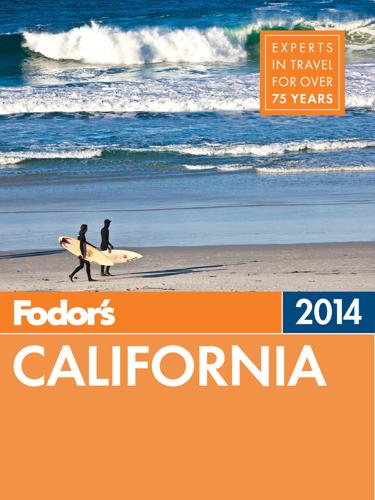
Fodor's California 2014
by
Fodor's
Published 5 Nov 2013
This two-level museum is likely to see an uptick in visitors in response to the 2012 film version of On the Road, whose director donated the 1949 Hudson from the movie. Check out exhibits such as the “Beat pad,” a mock-up of one of the cheap, tiny North Beach apartments the writers and artists populated in the 1950s, complete with bongos and bottle-as-candleholder. Memorabilia include the shirt Neal Cassady wore while driving Ken Kesey’s Merry Prankster bus, “Further.” An early photo of the legendary bus is juxtaposed with a more current picture showing it covered with moss and overgrowth, labeled “Nothing lasts.” Indeed. There are also manuscripts, letters, and early editions by Jack Kerouac, Allen Ginsberg, and Lawrence Ferlinghetti.
…
The Diggers, a radical group of actors and populist agitators, for example, operated a free shop a few blocks off Haight Street. Everything really was free at the free shop; people brought in things they didn’t need and took things they did. Among the folks who hung out in or near the Haight during the late 1960s were writers Richard Brautigan, Allen Ginsberg, Ken Kesey, and Gary Snyder; anarchist Abbie Hoffman; rock performers Marty Balin, Jerry Garcia, Janis Joplin, and Grace Slick; LSD champion Timothy Leary; and filmmaker Kenneth Anger. If you’re keen to feel something resembling the hippie spirit these days, there’s always Hippie Hill, just inside the Haight Street entrance of Golden Gate Park.
…
At one end of the sand is a cluster of waterfront homes (and where nude sunbathers lay their towels), and at the other are the bluffs of Golden Gate National Recreation Area. The beach itself has an interesting history. Janis Joplin’s ashes were scattered here among the sands, and this is where author Ken Kesey hosted the second of his famed Acid Tests. Amenities: parking (free); toilets. Best for: nudists; solitude; walking. | 190 Pacific Way, off Shoreline Highway | Muir Beach | 94965 | www.nps.gov/goga/planyourvisit/muirbeach.htm. Where to Stay Marin Headlands Hostel. As hostels go, it’s hard to beat this beautifully situated, well-maintained property in a valley on the north side of the headlands, the only lodging in the GGNRA that isn’t a campsite.

Utopia Is Creepy: And Other Provocations
by
Nicholas Carr
Published 5 Sep 2016
If you’re on the bus, and you get left behind, then you’ll find it again. If you’re off the bus in the first place—then it won’t make a damn.” And nobody had to have it spelled out for them. Everything was becoming allegorical, understood by the group mind, and especially this: “You’re either on the bus . . . or off the bus.” Ken Kesey is dead, but the bus rolls on. Through a kind of hallucinogenic vehicular transmogrification, it has become the Google bus, shuttling geeks between their homes in San Francisco and the company’s headquarters in Mountain View. The makeover is, on the surface, extreme. The Kesey bus was a 1939 International Harvester school bus bought for peanuts; the Google bus is a plush new Van Hool machine that goes for half a million bucks.
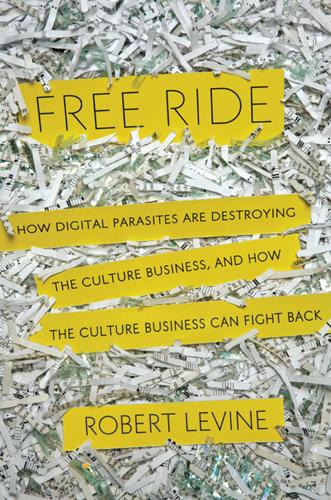
Free Ride
by
Robert Levine
Published 25 Oct 2011
On the other hand, information wants to be free, because the cost of getting it out is getting lower and lower all the time. So you have these two fighting against each other. Brand’s own information wanted to be expensive, and he made a small fortune in the publishing business. A bohemian intellectual who befriended both Buckminster Fuller and Ken Kesey, Brand appeared as a character in Tom Wolfe’s Electric Kool-Aid Acid Test and campaigned for NASA to release a picture of Earth from space. As living off the land became part of the post-hippie zeitgeist, he created the Whole Earth Catalog, an influential compendium of advice that Steve Jobs once referred to as “sort of like Google in paperback form.”19 He started out peddling an early version from the back of his truck and went on to sell more than a million copies of a later edition.
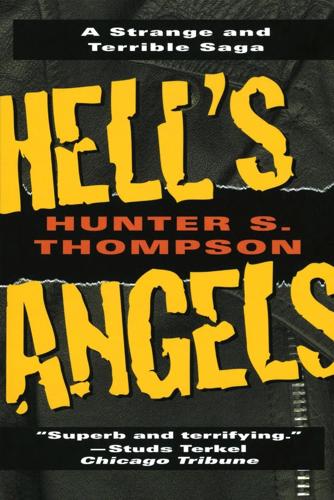
Hell's Angels: A Strange and Terrible Saga
by
Hunter S. Thompson
Published 1 Jan 1966
This fouled their channels of communication, which made them nervous … and after a brief whirl on the hipster party circuit, all but a few decided it was both cheaper and easier, in the long run, to buy their own booze and hustle a less complicated breed of pussy. The only really successful connection I made for the Angels was with Ken Kesey, a young novelist‡‡ living in the woods near La Honda, south of San Francisco. During 1965 and ’66 Kesey was arrested twice for possession of marijuana and finally had to flee the country to avoid a long prison term. His association with the Hell’s Angels was not calculated to calm his relationship with the forces of law and decency, but he pursued it nonetheless, and with overweening zeal.

They All Came to Barneys: A Personal History of the World's Greatest Store
by
Gene Pressman
Published 2 Sep 2025
Part of the rebellion of the day was a rebellion against the rules—if previous generations wanted us to get out and make something of ourselves, we were determined to turn on, tune in, drop out. By 1968, everything had started to get pretty trippy. LSD got popular on the West Coast, and like so much else, caravanned across the country. Its prophets were Timothy Leary and Ken Kesey, the guru and the Merry Prankster. Its theme song was “White Rabbit,” which Grace Slick wrote after tripping, and its ambassadors were the Grateful Dead. (When I saw them play in the early ’70s, they were so zonked, and noodled through their tunes for so long, that I ended up coming down before they finished.)
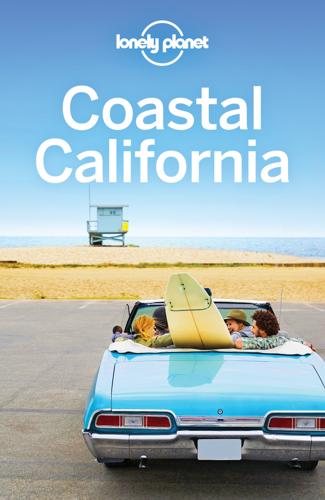
Coastal California Travel Guide
by
Lonely Planet
During WWII, soldiers accused of insubordination and homosexuality were dismissed in San Francisco, as though that would teach them a lesson. Instead San Francisco’s counterculture thrived, with North Beach jazz and Beat poetry. When the Central Intelligence Agency (CIA) tested LSD on the willing volunteer and One Flew Over the Cuckoo’s Nest author Ken Kesey, he slipped some into Kool-Aid and kicked off the psychedelic ’60s. The Summer of Love brought free food, love and music to the Haight, and pioneering gay activists in the Castro helped elect Harvey Milk as San Francisco supervisor – America’s first out gay official. When San Francisco witnessed devastating losses from HIV/AIDS in the 1980s, the city rallied to become a global model for epidemic treatment and prevention.
…
A mile in from San Gregorio State Beach ( GOOGLE MAP ; %650-726-8819; www.parks.ca.gov; Hwy 1, San Gregorio; per car $8; h8am-sunset) on Hwy 1, kick off your shoes and stomp your feet to live bluegrass, Celtic and folk music on the weekends at the San Gregorio General Store ( GOOGLE MAP ; %650-726-0565; www.sangregoriostore.com; 7615 Stage Rd, San Gregorio; hstore 10:30am-6pm Sun-Thu, to 7pm Fri, 10am-7pm Sat, to 6pm Sun). Check out the wooden bar singed by area branding irons. Eight miles further east is the tiny township of La Honda, former home to One Flew Over the Cuckoo’s Nest author Ken Kesey and the launching spot for his 1964 psychedelic bus trip immortalized in Tom Wolfe’s The Electric Kool-Aid Acid Test. Housed in a 19th-century blacksmith’s shop, Apple Jack’s ( GOOGLE MAP ; %650-747-0331; 8790 Hwy 84, La Honda; hnoon-2am) is a rustic, down-home country-and-western bar with motorcycles lined up in a row outside.
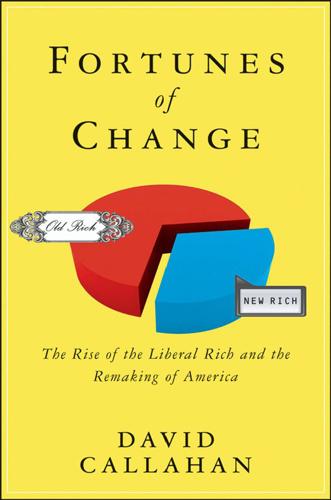
Fortunes of Change: The Rise of the Liberal Rich and the Remaking of America
by
David Callahan
Published 9 Aug 2010
The universities of the Bay Area were deeply influenced by the counterculture and political movements of the 1960s. The University of California at Berkeley was a hotbed of activism and the hippie lifestyle. Stanford University, with close ties to Silicon Valley, was a haven for alternative thinkers and drug experimentation (Ken Kesey had gotten his start there), and the computer research labs were part of this scene. Fred Moore, a young technologist, emerged from this climate to become an innovator of personal computers. He was also a political activist and a crusader for social justice, and he saw these two parts of his life as closely linked.
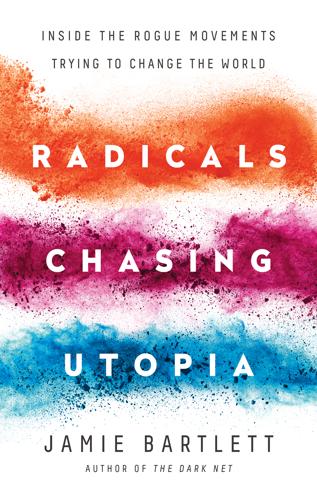
Radicals Chasing Utopia: Inside the Rogue Movements Trying to Change the World
by
Jamie Bartlett
Published 12 Jun 2017
He tried (and failed) to set up a psychedelic summer camp in Mexico, and in 1966 founded the League for Spiritual Discovery, to ‘change and elevate the consciousness of every American within the next few years’. Ginsberg’s and Leary’s ideas were taking root in fertile soil. Psychedelics were fast becoming the drug of choice for the counterculture movements sweeping America at the time. The Beatles, Bob Dylan, Ken Kesey and the Merry Pranksters, Jack Kerouac, the Doors (named after Huxley’s book) were all getting high, and writing and singing about it. Civil rights activists were getting high. Anti-Vietnam protesters were getting high. Conservative America didn’t like it. In 1966 California became the first state to outlaw psychedelics, at which point Leary gave up any remaining academic pretences and gave his famous ‘Turn on, tune in, drop out’ speech, urging people to join the ‘psychedelic revolution’.* Thousands of Americans followed the advice, but they weren’t taking drugs in a careful clinical setting accompanied by seasoned guides: they were dropping tabs at parties and festivals.
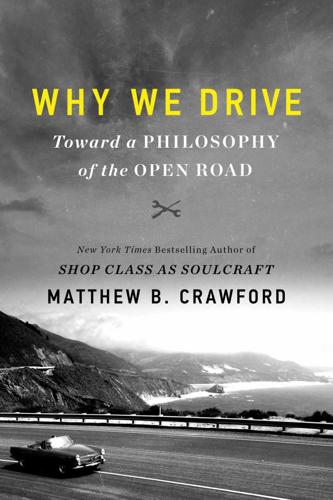
Why We Drive: Toward a Philosophy of the Open Road
by
Matthew B. Crawford
Published 8 Jun 2020
By his own admission (or boast), he seems barely to have noticed the race itself through the haze of drugs he brought with him from Los Angeles. I didn’t even know who’d won the race. Maybe nobody. For all I knew, the whole spectacle had been aborted by a terrible riot—an orgy of senseless violence, kicked off by drunken hoodlums who refused to abide by the rules. This is the Ken Kesey–meets–Hell’s Angels cultural stew that Thompson served up consistently, with himself as the main ingredient, regardless of the milieu he was ostensibly reporting. But desert racing is a scene that rewards meticulous mechanical preparation and sustained focus, not inebriated abandon, so it wasn’t the best venue for his shtick.2 IN THE HAZY afternoon hours after the race had finished I found a perch at the Shamrock.
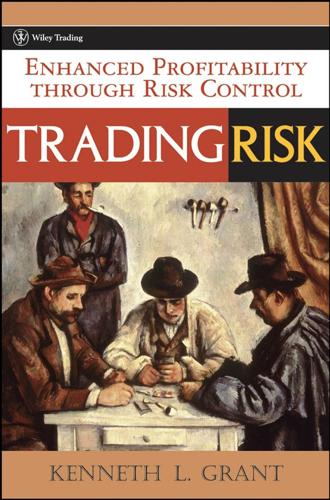
Trading Risk: Enhanced Profitability Through Risk Control
by
Kenneth L. Grant
Published 1 Sep 2004
I’ve seen the effects of this and know that they can be devastating, with sellers having to dump assets at prices below cost and buyers being forced to pay outrageous amounts for needed commodities whose availability and production costs give lie to the amounts at which their controllers make them available. PURE GRAIN I have only one more anecdote to share; and when I tell you to skip it if you wish, I do so with a Grateful (yes, Grateful) nod to Ken Kesey. In my former career as director of risk management for the Chicago Mercantile Exchange, I was frequently called on to discuss our methods with financial planners from around the world who sought to establish or to enhance futures markets in their own countries, and thus reap the benefits that we in the United States have enjoyed for so long due to the advanced state of our market mechanisms.
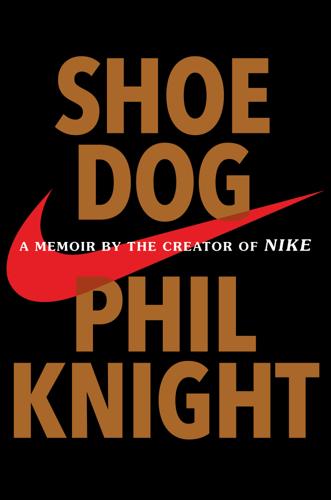
Shoe Dog
by
Phil Knight
Published 25 Apr 2016
I tried to con myself; more than once I told myself that Pre was just a kid from Coos Bay, a short, shaggy-haired jock with a porn star mustache. But I knew better. And a few minutes in his presence would prove it. A few minutes was all I could take. The world’s most famous Oregonian at the time was Ken Kesey, whose blockbuster novel, One Flew Over the Cuckoo’s Nest, appeared in 1962, the exact moment I left on my trip around the world. I knew Kesey at the University of Oregon. He wrestled, and I ran track, and on rainy days we’d do indoor workouts at the same facility. When his first novel came out I was stunned by how good it was, especially since the plays he’d written in school had been dreck.
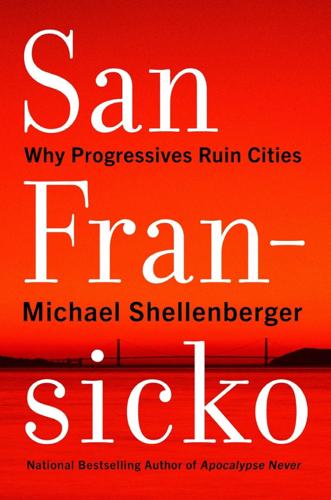
San Fransicko: Why Progressives Ruin Cities
by
Michael Shellenberger
Published 11 Oct 2021
That same year, a psychiatrist named Thomas Szasz published The Myth of Mental Illness, which argued that psychiatrists and others invented the concept of mental illness, with no biological evidence, in order to punish people who were different from the norm. The anti-psychiatry movement became a cultural phenomenon in 1962 with the publication of Ken Kesey’s bestselling novel One Flew Over the Cuckoo’s Nest. It revolves around a socially deviant but nonetheless sane man who feigns mental illness so he can go to a mental hospital rather than prison. He is drugged, electro-shocked, and eventually lobotomized. The novel was adapted as a Broadway play and an Oscar-winning 1975 film starring Jack Nicholson.
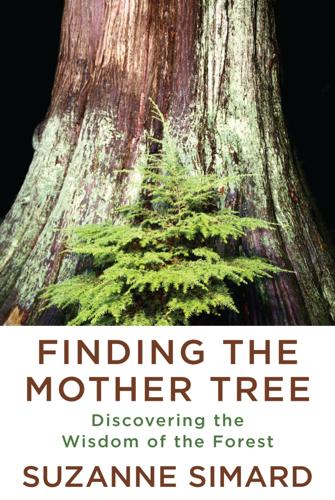
Finding the Mother Tree: Discovering the Wisdom of the Forest
by
Suzanne Simard
Published 3 May 2021
Mary’s face absorbed the last rays of sun, both of us enjoying this freedom, the company of each other. I had that old sense of falling, softly and deeply, like snow settling on the mountains. The next morning, she picked earthy-sweet blueberries and mixed them with blackberries, and we ate under the shade of her quince tree. She read me an excerpt from Ken Kesey’s Sometimes a Great Notion and invited me to canoe down the Willamette River in the fall. I didn’t want to leave; every cell in my body stirred. I lingered until there was barely enough time to make it by midnight to the site where I would teach my field course the next day, eleven hundred kilometers to the north.
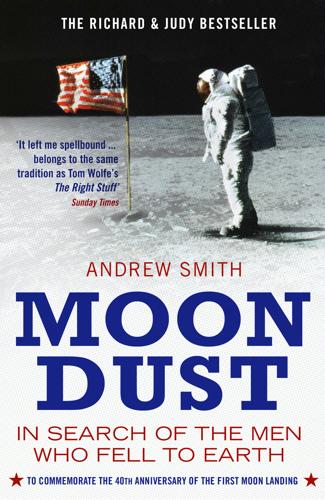
Moondust: In Search of the Men Who Fell to Earth
by
Andrew Smith
Published 3 Apr 2006
He’d failed to make the Mercury 7 only because of his irreverent attitude to the tests and my favourite story is that when a psychiatrist held up a blank piece of paper and asked him to describe what he saw, he replied, “But it’s upside down.” He is thought to have been Tom Wolfe’s main source for The Right Stuff and was the kind of man other men either wanted to follow or be – more like Ken Kesey or Tim Leary than other astronauts. I can see the problem with the picture, too, because depicting a man clicking his heels in a space suit is difficult without making him also look like he’s toppling over. Bean asks me for my opinion on it, which he would certainly never do if he’d seen the paint scheme in my study, and we fall to talking about the trip back, as he describes the intense sensation of slamming into the Earth’s atmosphere at 24,000 miles per hour – the point at which they understood how fast 24,000 miles per hour really is … twelve times faster than a high-speed rifle bullet … and they hit six and a half Gs.
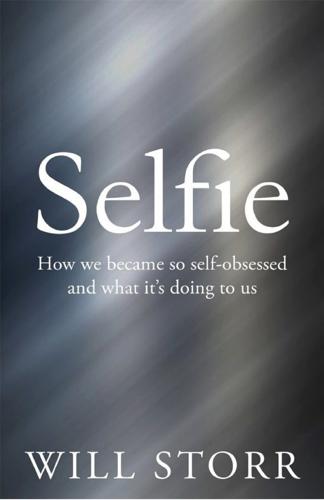
Selfie: How We Became So Self-Obsessed and What It's Doing to Us
by
Will Storr
Published 14 Jun 2017
A phrase heard often around the property was ‘Mother Esalen gives permission’ and, indeed, she did. There was nude massage, group sex, physical aggression and colossal psychedelia; there were grown men re-experiencing their births, young women in sheer gowns playing flutes by the pool and encounters with visionaries such as Ken Kesey, Joseph Campbell and Timothy Leary. Fritz had his wall decorated with the abandoned spectacles of clients he claimed had regained perfect sight following his sessions, while in another group, three women were said to have experienced spontaneous orgasm. Jane Fonda came to Esalen to learn Zen and had an affair with co-founder Richard Price while she was at it.
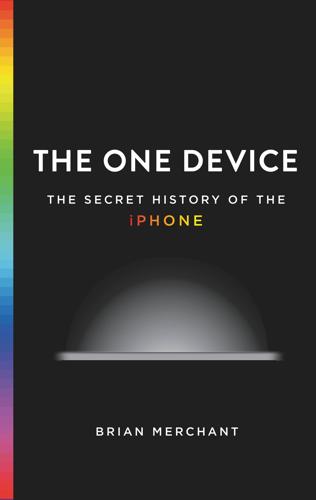
The One Device: The Secret History of the iPhone
by
Brian Merchant
Published 19 Jun 2017
Of course, he wasn’t necessarily the first—one of his peers, the Canadian academic Hugh Le Caine, made capacitive-touch sensors. (Recall, that’s the more complex kind of touchscreen that works by sensing when a human finger creates a change in capacitance.) Then there was Don Buchla, the Berkeley techno-hippie who wired Ken Kesey’s bus for the Merry Prankster expeditions and who was also a synth innovator, but he’d make an instrument only for those he deemed worthy. They all pioneered capacitive-touch technology, as did Buxton, in their aural experiments. The first device that we would recognize as a touchscreen today is believed to have been invented by Eric Arthur Johnson, an engineer at England’s Royal Radar Establishment, in 1965.
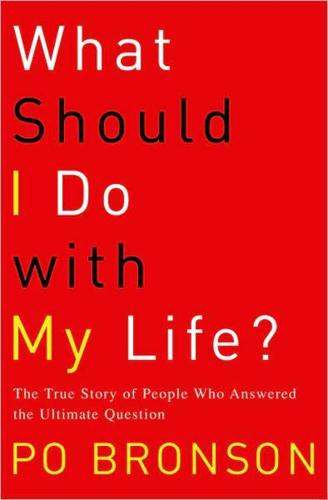
What Should I Do With My Life?
by
Po Bronson
Published 2 Jan 2001
One hundred thousand cases of psychotic depression are logged in the United States every year, which means almost two thousand people a month commit suicide under its spell. Unfortunately, the only available treatment is electroshock therapy. I didn’t know this still went on—I thought that since Ken Kesey exposed its horrors in the sixties, it had gone the way of bloodletting. I was wrong. So I went down to Stanford Hospital to watch. They still have a case a day. Patients are knocked out with general anesthesia. A current is run through the patient’s brain until it forces a seizure, which medically is a tremendous release of neurotransmitters that basically triggers a cold reboot of the brain.
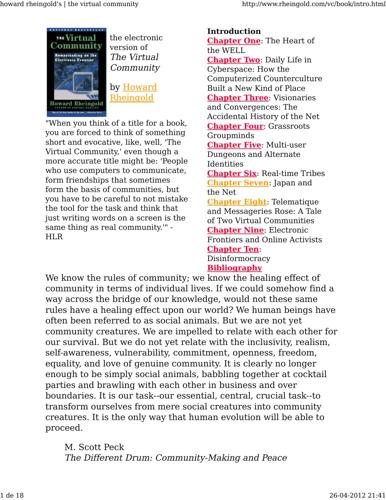
Howard Rheingold
by
The Virtual Community Homesteading on the Electronic Frontier-Perseus Books (1993)
Published 26 Apr 2012
Brand had been part of the faculty at an online institute devoted 26-04-2012 21:42 howard rheingold's | the virtual community 4 de 27 http://www.rheingold.com/vc/book/2.html to stretching the imaginations of business leaders--the Western Behavioral Sciences Institute (WBSI)--which introduced him to the effectiveness of computer conferencing. WBSI was also where he connected with Larry Brilliant. Brilliant and Brand shared a history at the center of several of the most colorful events of the 1960s: Brand was "on the bus" with Ken Kesey and the Merry Pranksters (Kesey's pot bust, as described in Tom Wolfe's Electric Kool-Aid Acid Test, happened on the roof of Brand's apartment; Brand was one of the organizers of the seminal Trips Festival that gave birth to Bill Graham Presents and the whole rock concert scene). Brilliant had been part of the Prankster-affiliated commune, the Hog Farm (which had organized the security arrangements for Woodstock around the judicious use of cream pies and seltzer bottles and had whipped up "breakfast in bed for 400,000").

The Contrarian: Peter Thiel and Silicon Valley's Pursuit of Power
by
Max Chafkin
Published 14 Sep 2021
He was interviewed in a dark room with dramatic lighting, and a few of the fellows were taped in their hometowns, reality-TV style, as they packed their bags and said goodbye to their parents. Thiel also partnered with a friendly journalist, Alexandra Wolfe Schiff, who happened to be the daughter of Tom Wolfe, to write a book about the project. The idea was to remake the elder Wolfe’s The Electric Kool-Aid Acid Test, but with Thiel traveling the country by bus like some modern-day Ken Kesey, picking up fellows and bringing them to Silicon Valley. The fellowship, and the accompanying media push, constituted a major element of Thiel’s attempt to change his public perception. He’d spent the early 2000s playing a role that wasn’t his—the heterosexual, high-living hedge fund manager—now he was fashioning a new character: a bold, risk-taking investor with a burning desire to blow up the system.
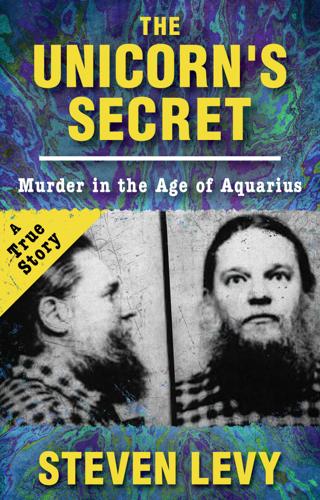
The Unicorn's Secret
by
Steven Levy
Published 6 Oct 2016
Ira drove cross-country in seventy-two hours to find that something was happening, and if Mr. Jones didn’t know what it was, Ira Einhorn figured it out with instant cognition. He split his time between Berkeley and Palo Alto, twin epicenters of the movement. Within days of arrival, he met the paisley surge head-on—a party at La Honda, Ken Kesey’s place, where the “acid tests” would launch the counterculture on its long, strange trip. This was one of the few times that even Ira Einhorn’s mind got too boggled to assimilate a happening: “I was so high and the experience was so strange that I must have more distance,” he wrote in a self-described “pot missive.”

Masters of Management: How the Business Gurus and Their Ideas Have Changed the World—for Better and for Worse
by
Adrian Wooldridge
Published 29 Nov 2011
The buildings are a strange mixture of international styles. One training center looks like a Disneyland version of Washington’s Capitol, and the multiplex resembles a giant glass golf ball. The Taj Mahal meeting room sits next to the John Pierpont Morgan lecture hall. To a visiting Westerner this is all rather hallucinatory: you half expect to meet Ken Kesey and his Merry Pranksters. To young Indians on the way up, it proclaims that the world is their oyster. No wonder most Infosysians like to bring their extended families to tour the campus. Infosys grasped from the start that to challenge global companies such as IBM it would have to attract India’s brightest.

Operation Chaos: The Vietnam Deserters Who Fought the CIA, the Brainwashers, and Themselves
by
Matthew Sweet
Published 13 Feb 2018
The first time I heard its name, I thought the ADC sounded rather innocuous. I imagined a room of sober young men passing resolutions against the military-industrial complex. Now I think of it as a phenomenon of a different order. Something through which we might read the times, like the psychedelic bus trip undertaken by Ken Kesey and the Merry Pranksters; or the Stanford Prison Experiment, inside which the psychologist Philip Zimbardo barricaded a group of impressionable boys and watched them sink into barbarism. To describe the experiences of all those whose lives were touched by the committee would require more than a book.
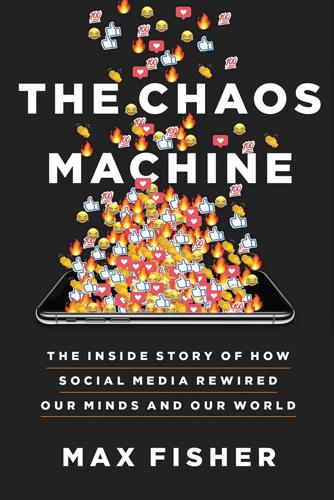
The Chaos Machine: The Inside Story of How Social Media Rewired Our Minds and Our World
by
Max Fisher
Published 5 Sep 2022
“It’s dangerous,” historian Margaret O’Mara said, “because the myth becomes Silicon Valley’s reality.” Talk of smashing power structures was, at first, mostly rhetorical. But a handful of zealots built those ideals, taken to an almost millenarian extreme, into something they called the WELL, the first social network of real consequence. It had grown out of a magazine run by a former Ken Kesey associate named Stewart Brand, who’d spent the ’60s driving between California’s hippie communes selling supplies out of his truck. He’d called it the Whole Earth Truck Store. On settling in the Santa Clara Valley, he converted it, in 1968, into the Whole Earth Catalog. The name was a joke: it advised readers on how to make the products on their own, alongside articles promoting hippie communalism.
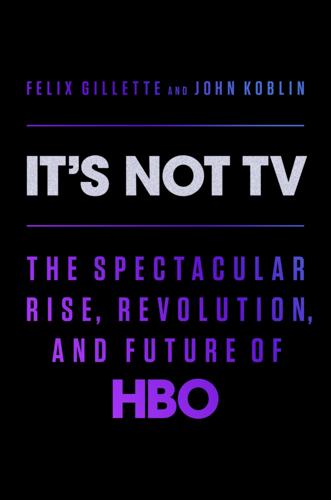
It's Not TV: The Spectacular Rise, Revolution, and Future of HBO
by
Felix Gillette
and
John Koblin
Published 1 Nov 2022
On November 8, 1972, HBO made its debut for some 375 subscribers in the small town of Wilkes-Barre, Pennsylvania. Levin was the first executive to appear on HBO, introducing the inaugural lineup of programming, which included a New York Rangers hockey game and a year-old movie from Paramount called Sometimes a Great Notion, starring Paul Newman and based on the novel by Ken Kesey. The initial test did little to stoke broader demand for the service. HBO sputtered. The network was boxed in by the emerging landscape of cable TV, which was a fragmented mess. The only way for HBO to reach cable subscribers beyond the New York region would be to cobble together a cross-country, point-to-point relay network of microwave transmission towers and existing landlines, which were controlled by the Bell Telephone Company under a broad monopoly.
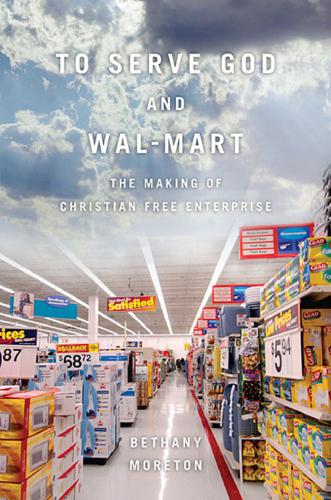
To Serve God and Wal-Mart: The Making of Christian Free Enterprise
by
Bethany Moreton
Published 15 May 2009
President Jack Shewmaker, a major force in pushing the digital revolution in Bentonville, even attended the same church as Holder.33 These creative collusions between business, technology, and belief shed new light on the supposed “paradox” of Wal-Mart: how the hightech rednecks mastered cybernetics and corporate culture without losing Christ or country music. Despite its gleam of pure sciÂ�enÂ�tific rationality, developing and deploying high technology has been in part a 132 MAKING CHRISTIAN BUSIN E S S M EN spiritual exercise from the beginning, no matter the political context. The countercultural devotees of Buckminster Fuller, Ken Kesey, and the Whole Earth Catalog brought their dreams of antiauthoritarian, transcendent elitism into the cyber revolution in California. Blending their privileged vision as “comprehensive designers” with the decentralized technologies they developed, this loose fraternity marked an entire wing of the postindustrial economy with their conviction that their new tools made them “as gods.”
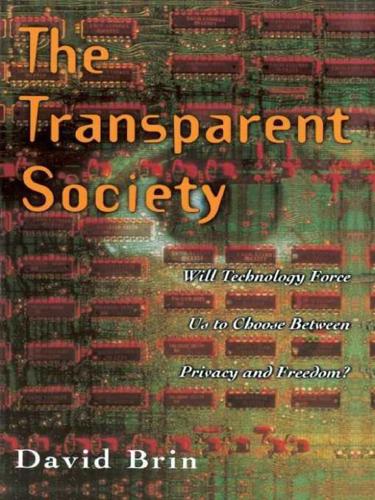
The Transparent Society: Will Technology Force Us to Choose Between Privacy and Freedom?
by
David Brin
Published 1 Jan 1998
It is what I was trained to do. So, in all probability, were you. Out of millions brought up under this “dogma of otherness,” some applied their unleashed creativity in the world of new media. Is it just coincidence that the silicon revolution burgeoned near the birthplace of “flower power”? Or that some who rode with Ken Kesey in the Electric Koolaid Schoolbus later established pioneering outposts on the cybernetic frontier? Almost no one foresaw the personal computer. Certainly not the big shots at IBM or Burroughs. But society acquired the PC and other wonders because a cohort of young minds were indoctrinated to seek novelty where standard organizations never looked.
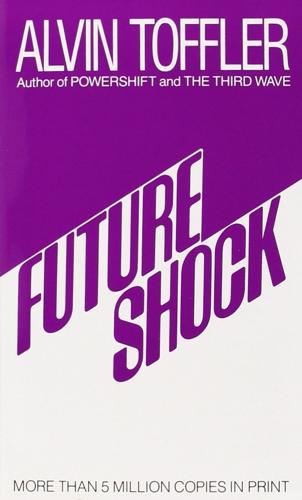
Future Shock
by
Alvin Toffler
Published 1 Jun 1984
Its most conspicuous elements were the glorification of poverty—jeans, sandals, pads and hovels; a predilection for Negro jazz and jargon; an interest in Eastern mysticism and French existentialism; and a general antagonism to technologically based society. Despite extensive press coverage, the beats remained a tiny sect until a technological innovation—lysergic acid, better known as LSD—appeared on the scene. Pushed by the messianic advertising of Timothy Leary, Allen Ginsberg and Ken Kesey, distributed free to thousands of young people by irresponsible enthusiasts, LSD soon began to claim a following on the American campus, and almost as quickly spread to Europe as well. The infatuation with LSD was accompanied by a new interest in marijuana, a drug with which the beats had long experimented.
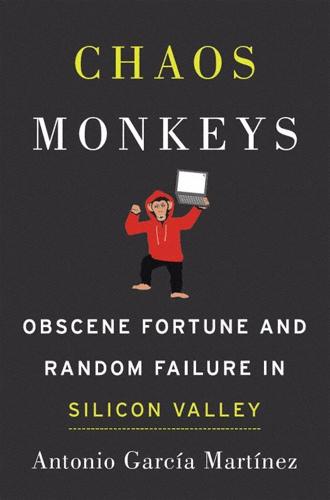
Chaos Monkeys: Obscene Fortune and Random Failure in Silicon Valley
by
Antonio Garcia Martinez
Published 27 Jun 2016
Jimmy was my exotic beer dealer at Willows, the local family-owned grocery store in Menlo Park, which had survived the chain-store assault of Whole Foods by developing a thriving sideline in craft beer. The market was on Willow Road, which started just outside 24-karat Palo Alto, then wended its way through equally gold-plated Menlo Park and past the VA hospital that Ken Kesey once worked in and that inspired One Flew Over the Cuckoo’s Nest. Almost as if on an exotic safari, Willow Road then traversed East Palo Alto, the local slum that once had the highest murder rate in the Bay Area (two of the local schools are named after César Chávez and Ron McNair, an African American astronaut), before ending at Facebook’s entrance gate, complete with Like sign ringed by an ever-present scrum of tourists.
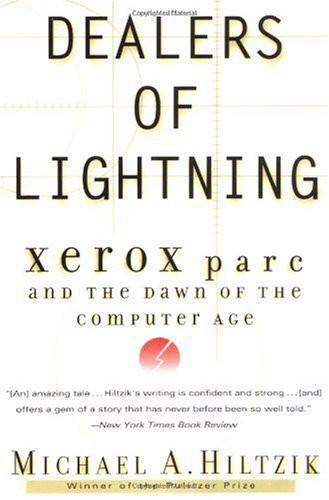
Dealers of Lightning
by
Michael A. Hiltzik
Published 27 Apr 2000
This was symbolized by Pake’s (inaccurate) recollection years later that the Rolling Stone article “flat out stat[ed] that a lot of these guys were brilliant druggies. [That] wasn’t the kind of publicity the corporation wanted.” In fact, the article neither stated nor even remotely implied anything about drug use at PARC. Brand was no Ken Kesey chronicling the escapades of a merry band of stoned-out party guys but a self-styled social theorist interpreting the new technologies against the era’s political backdrop. Nevertheless, for the stolid traditionalists who inhabited Xerox headquarters “Spacewar’s” text and pictures inescapably evoked lax morals and California hippiedom.

Evil Geniuses: The Unmaking of America: A Recent History
by
Kurt Andersen
Published 14 Sep 2020
The simultaneous folk-music revival, from which Bob Dylan emerged, also consisted of cool kids scratching the same nostalgic American itch ahead of everyone else. College students and hepcats in the early 1960s also rediscovered and worshiped 1940s movies like Casablanca and The Maltese Falcon at smoky revival movie theaters. In 1964 Kerouac’s road-trip buddy Neal Cassady joined young Ken Kesey and his band of protohippies, driving them across America from the Santa Cruz Mountains to New York City to visit, yes, the World’s Fair. They were pioneering inventors of the counterculture—which presently became a mass phenomenon and inherited some of the Beats’ sentimental streaks concerning the American old days.
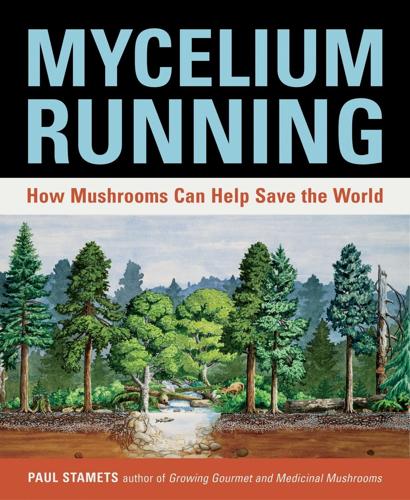
Mycelium Running: How Mushrooms Can Help Save the World
by
Paul Stamets
Published 14 Apr 2005
Spores have the advantage of quantity—many millions of points of inoculation. Their disadvantage is their fickleness—sometimes they work well, and other times not, depending on the species and the substrate. There are other ways of using spores. FIGURE 130 One of these spored oils was made especially for Ken Kesey and the Merry Pranksters and contains hundreds of millions of spores of Psilocybe azurescens. See also figure 77, showing a mycelial colony emanating from point of contact with spored oil. Spores in Oils Spores can be immersed in canola, corn, or safflower oil, which can be used as a lubricant for chain saws or other cutting equipment.

The Rise and Fall of the Neoliberal Order: America and the World in the Free Market Era
by
Gary Gerstle
Published 14 Oct 2022
Steve Jobs’s career as a communard and “(apple) tree-hugging” hippie at Reed College is well known, an experience seen as a crucial prelude to his capacity to imagine a new world of freedom arising out of the personal computer. Stewart Brand, the man who invented the phrase “personal computer” and who is credited with helping generations of nerds and hackers to imagine the full potential—and freedom—of cyberspace, spent time in the 1960s alternating between two enthusiasms: first hanging out with Ken Kesey’s group of crazed “merry pranksters” and participating in the psychedelic parties Kesey was hosting at his home near the Stanford University campus; and second, publishing the Whole Earth Catalog, a paperback book of giant dimensions, each page packed with products and how-to information needed by individuals who were fleeing Moloch for communes where they could lead autarchic and self-sufficient lives.67 The Whole Earth Catalog eliminated the advertising, brand promotion, and mindless captions that filled the pages of just about every other catalogue and magazine in the United States at the time.
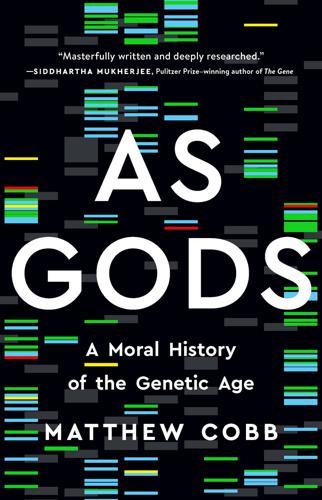
As Gods: A Moral History of the Genetic Age
by
Matthew Cobb
Published 15 Nov 2022
The subsequent decline happened at exactly the same time as the three threatening areas of genetic engineering that impelled me to write this book – heritable human genetic engineering, gene drives and gain-of-function research on dangerous pathogens – were emerging. We seem to have dropped our guard. Footnotes i Brand appears in the opening paragraphs of another iconic late-1960s book, Tom Wolfe’s The Electric Kool-Aid Acid Test (1968). Brand was one of Ken Kesey’s band of Merry Pranksters. ii Among the investors were the billionaire executive producer of Jurassic World and the celebrity Paris Hilton. That might sound a lot of money but given the scale of what is being attempted it is peanuts. Being a mammoth involved so much more than simply resisting cold – all the foraging behaviours, responses to the smell of food deep beneath the snow, and so on, would also have to be in place.
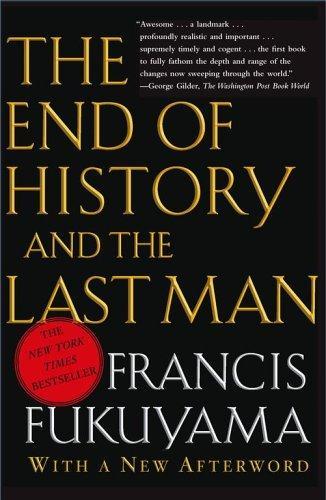
The end of history and the last man
by
Francis Fukuyama
Published 28 Feb 2006
In Mikhail Heller’s words, “The human relations that make up the society’s fabric—the family, religion, historical memory, language—become targets, as society is systematically and methodically atomized, and the individual’s close relationships are supplanted by others chosen for him, and approved by the state.”3 Ken Kesey’s 1962 novel, One Flew Over the Cuckoo’s Nest, provides an illustration of the totalitarian aspiration. The book centers around the inmates of an insane asylum who lead lives of childish inanity under the eyes of a tyrannical Big Nurse. The novel’s hero, McMurphy, tries to liberate them by breaking the asylum’s rules and eventually leading the inmates to freedom.
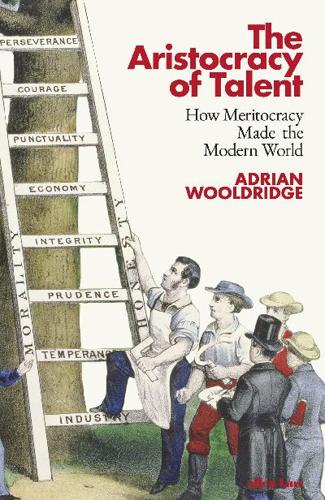
The Aristocracy of Talent: How Meritocracy Made the Modern World
by
Adrian Wooldridge
Published 2 Jun 2021
It also took place against the background of a cultural revolution: the 1960s was all about challenging inherited hierarchies and encouraging people to do their own thing, even if the established hierarchies seemed the most natural things in the world and the cost of letting it all hang out looked steep. R. D. Laing, a British psychoanalyst, became a celebrity by arguing that schizophrenia is a rational response to an irrational society. Ken Kesey’s One Flew over the Cuckoo’s Nest (1962) argued that the people who run lunatic asylums are crazier and more dangerous than the people they lock up. Michel Foucault produced a succession of zeitgeist-shaping books that tried to reverse the Enlightenment’s belief in the rule of reason: for him ‘modernity’ is synonymous with inventing classificatory regimes and institutions that are designed to marginalize groups such as homosexuals and non-conformists and indeed restrain the human psyche itself.
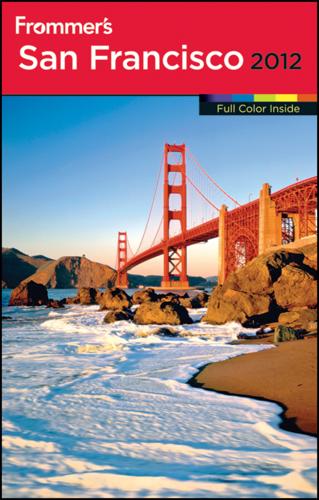
Frommer's San Francisco 2012
by
Matthew Poole
,
Erika Lenkert
and
Kristin Luna
Published 4 Oct 2011
Strange,” was given at the Longshoreman’s Hall in fall 1965, featuring Jefferson Airplane, the Marbles, the Great Society, and the Charlatans. At this event, the first major happening of the 1960s, Ginsberg led a snake dance through the crowd. In January 1966, the 3-day Trips Festival, organized by rock promoter Bill Graham, was also held at the Longshoreman’s Hall. The climax came with Ken Kesey and the Merry Pranksters Acid Test show, which used five movie screens, psychedelic visions, and the sounds of the Grateful Dead and Big Brother and the Holding Company. The “be-in” followed in the summer of 1966 at the polo grounds in Golden Gate Park, when an estimated 20,000 heard Jefferson Airplane perform and Ginsberg chant, while the Hell’s Angels acted as unofficial police.
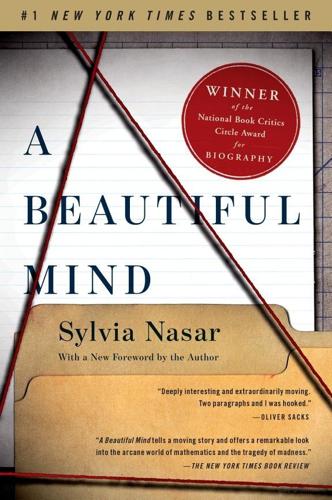
A Beautiful Mind
by
Sylvia Nasar
Published 11 Jun 1998
Ibid. 63. Letter from Albert E. Meder to William Ted Martin, 3.28.63. 64. Confidential source. 65. Donald Spencer, interview, 11.28.95. 66. Winters, interview. 67. Letter from Martha Nash Legg to Donald Spencer, 4.24.63. 42: The “Blowing Up” Problem 1. Robert Garber, interview, 5.6.96. 2. Ken Kesey, One Flew Over the Cuekoo’s Nest (New York: Viking, 1962); Joanne Greenberg, I Never Promised You a Rose Garden (New York: Signet, 1964); Thomas S. Szasz, The Mvth of Mental Illness (New York: Hoeber-Harper, 1961). 3. William Otis, psychiatrist, interview, 5.3.96. 4. Garber, interview. 5. Alicia Nash, interview, 8.15.97. 6.

Tools of Titans: The Tactics, Routines, and Habits of Billionaires, Icons, and World-Class Performers
by
Timothy Ferriss
Published 6 Dec 2016
” * * * James Fadiman James Fadiman, PhD (psychedelicsresearch@gmail.com, jamesfadiman.com), has been involved with psychedelic research since the 1960s. He did his undergraduate work at Harvard and his graduate work at Stanford, where he collaborated with the Harvard Group, the West Coast Research Group in Menlo Park, and Ken Kesey. He is the author of The Psychedelic Explorer’s Guide and is often referred to as America’s wisest and most respected authority on psychedelics and their use. Preface Some of my loved ones would insist that the most important work I’ve done in the last 4 years has involved studying and judiciously using psychedelics.
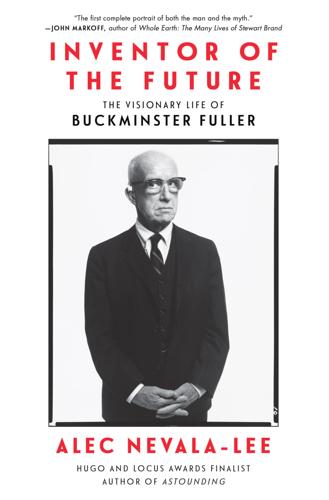
Inventor of the Future: The Visionary Life of Buckminster Fuller
by
Alec Nevala-Lee
Published 1 Aug 2022
From there, he wandered into art circles, including USCO, an experimental collective of poets, filmmakers, and other artists in Garnerville, New York, at which he encountered Fuller’s ideas in depth for the first time. After reading the novel One Flew Over the Cuckoo’s Nest, Brand connected in California with the author Ken Kesey, who dreamed of holding psychedelic events with lights and music in a giant dome. Brand collaborated with Kesey’s Merry Pranksters, a roving band of outsiders devoted to the liberating effects of hallucinogenic drugs, to produce the celebrated Trips Festival in San Francisco in 1966. Although Tom Wolfe dismissed Brand as “an Indian freak” in his chronicle of this period, The Electric Kool-Aid Acid Test, his interests ranged widely, and his first great insight came almost immediately after he saw Fuller speak at San Jose State: I was bored in the spring of 1966, and on my rooftop in North Beach, San Francisco, I took a half a dose—maybe 150 micrograms—of LSD, and just had a nice, long, thoughtful afternoon that was colored by having listened to a fair number of Buckminster Fuller lectures and having read his books over the previous months.
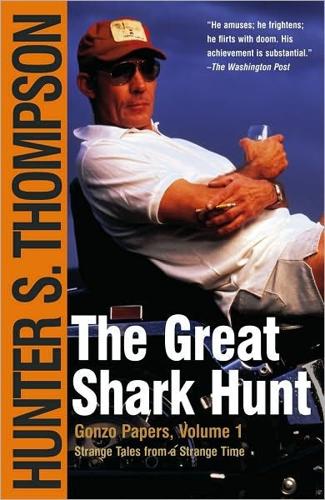
The Great Shark Hunt: Strange Tales From a Strange Time
by
Hunter S. Thompson
Published 6 Nov 2003
Brief discussion of Thompson's trip to NYC to promote Hell's Angels. "Thompson, Hunter," Contemporary Authors, Detroit: Gale, 1968, v. 19-20, p. 429-30. Standard bio. The Electric Kool-Aid Acid Test, Tom Wolfe, New York: Bantam, 1969. 700 Chapter 13: The Hell's Angels pp. 150-51. Describes how Ken Kesey met the Angels through Thompson. " 'Freak Power' Candidate May Be the Next Sheriff in Placid Aspen, Colorado," Anthony Ripley, photo by David Hiser, The New York Times, October 19, 1970, p. 44. "Will Aspen's Hippies Elect a Sheriff?" Edwin A. Roberts, Jr., National Observer, November 2,1970, p. 6.
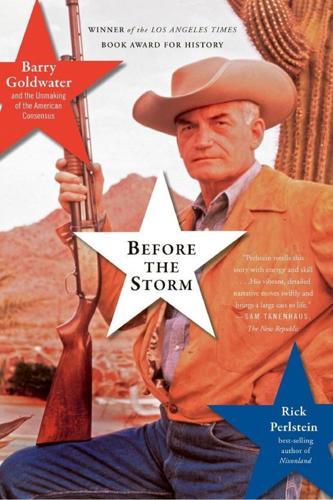
Before the Storm: Barry Goldwater and the Unmaking of the American Consensus
by
Rick Perlstein
Published 17 Mar 2009
Across town, at the intersection of Haight and Ashbury Streets, a new kind of bohemia was taking shape, although many of its most flamboyant representatives were occupied with a cross-country trip on a bus called “Further,” whose riotous exterior decoration included a sign reading “A VOTE FOR BARRY is A VOTE FOR FUN!” A stop along the way was the commune of former Harvard professor Timothy Leary, whose The Psychedelic Experience had come out that year. These were Ken Kesey’s “Merry Pranksters,” later to be immortalized as the first hippies in a book by New York Herald Tribune writer Tom Wolfe. The delegates, mostly gray old factory owners and club women—the butt of cabbies’ jokes that San Francisco banks were running out of nickels and dimes—would have been altogether disgusted by the goings-on at the Haight, were they aware of them; but the folks who would fill the Cow’s spectator galleries—the YAFers and Young Republicans—might have been amused.
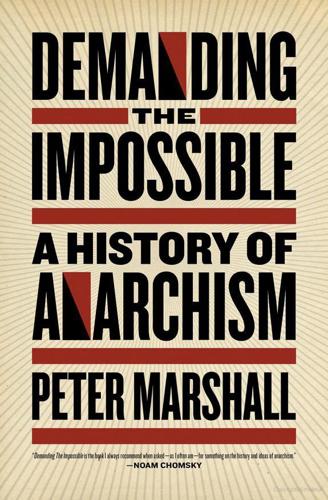
Demanding the Impossible: A History of Anarchism
by
Peter Marshall
Published 2 Jan 1992
His ‘visionary commonwealth’ on the far side of the urban-industrial wasteland is a decentralized society based on the commune and neighbourhood, combining Proudhon’s economic mutualism with Kropotkin’s harmonious blend of fields and workshops.9 The counter-culture was a product of the first American youth movement in history. The pioneers were the hippies, street people and flower children. They rejected the cultural templates of the dominant culture and tried to create their own alternative scene. Partly as a result of their ‘mind-expanding’ drug experiences — as encouraged by Aldous Huxley, Ken Kesey and Timothy Leary — they wanted to change people’s consciousness and cleanse ‘the doors of perception’. But it was also a question of change for change’s sake, or as Yippie leader Abbie Hoffman put it, Revolution for the Hell of It. Like the overtly political New Left movement, the counter-culture was fundamentally anarchist without being conscious of it, especially in its rejection of majority rule and its stress on the moral responsibility of the individual.
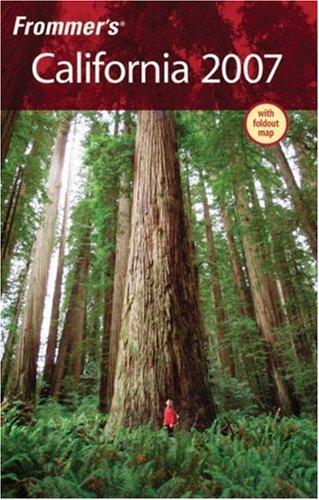
Frommer's California 2007
by
Harry Basch
,
Mark Hiss
,
Erika Lenkert
and
Matthew Richard Poole
Published 6 Dec 2006
Thompson, in his columns for the San Francisco Examiner (brought together in the collection Generation of Swine), both used a “new journalistic” approach in their studies of San Francisco in the 1960s. Tom Wolfe’s early work The Electric Kool-Aid Acid Test follows the Hell’s Angels, the Grateful Dead, and Ken Kesey’s Merry Pranksters as they ride through the hallucinogenic 1960s. Meanwhile, in “Howl” and On the Road, Beat writers Allen Ginsberg and Jack Kerouac, respectively, were penning protests against political conservatism— and promoting their bohemian lifestyle. CONTEMPORARY FICTION If you’re interested in a contemporary look back at four generations in the life of an American family, you can do no better than Wallace Stegner’s Angle of Repose.
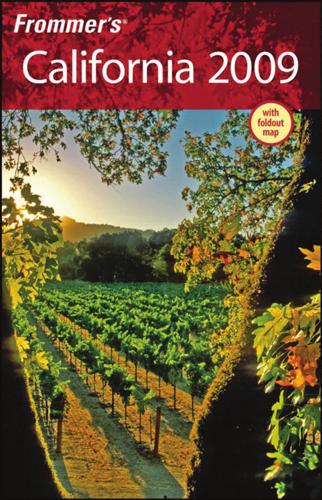
Frommer's California 2009
by
Matthew Poole
,
Harry Basch
,
Mark Hiss
and
Erika Lenkert
Published 2 Jan 2009
Thompson, in his columns for the San F rancisco E xaminer (br ought together in the collection Generation of Swine), both used a “ new journalistic ” approach in their studies of 1960s S an Francisco. Tom Wolfe’s early wor k, The Electric K ool-Aid A cid Test, follows the Hell’s Angels, the Grateful Dead, and Ken Kesey’s M erry P ranksters as they ride through that hallucinogenic decade. Meanwhile, Jack Kerouac, Allen Ginsberg, and the r est of the “B eat” writers w ere penning pr otests against political conservatism—and pr omoting their bohemian lifestyle—via G insberg’s contr oversial poem “H owl” (daringly published b y Lawrence Ferlinghetti, poet and o wner of City Lights Bookstor e in S an F rancisco’s North B each district) and K erouac’s famous tale of American adventure, On the Road.